THE HAUTE ROUTE
From Chamonix to Zermatt
The Haute Route links two of the Alps’ most iconic locations: Chamonix and Zermatt. It’s an itinerary through the glaciers, up close to the peaks at altitudes between 3,000 and 4,000 m.
After a blank year marked by the confinements of March and November 2020 and the closure of ski resorts, the high peaks have returned to their former glory. The mountains are a barometer of the state of the world, where global warming is three times more visible than elsewhere.
With a film crew, I set off on skis in April 2021, accompanied by mountain guide Lise Billon, glaciologist Inès Dussaillant and travel writer Cédric Gras, to document the melting of Alpine glaciers and decipher the visible and invisible signs that threaten them.
La Haute Route, au fil des glaciers is the manifesto of a generation that is questioning the future of a changing planet, and seeking to counter the threats of global warming with a new look at the mountains, as a message of hope for the future of mankind.
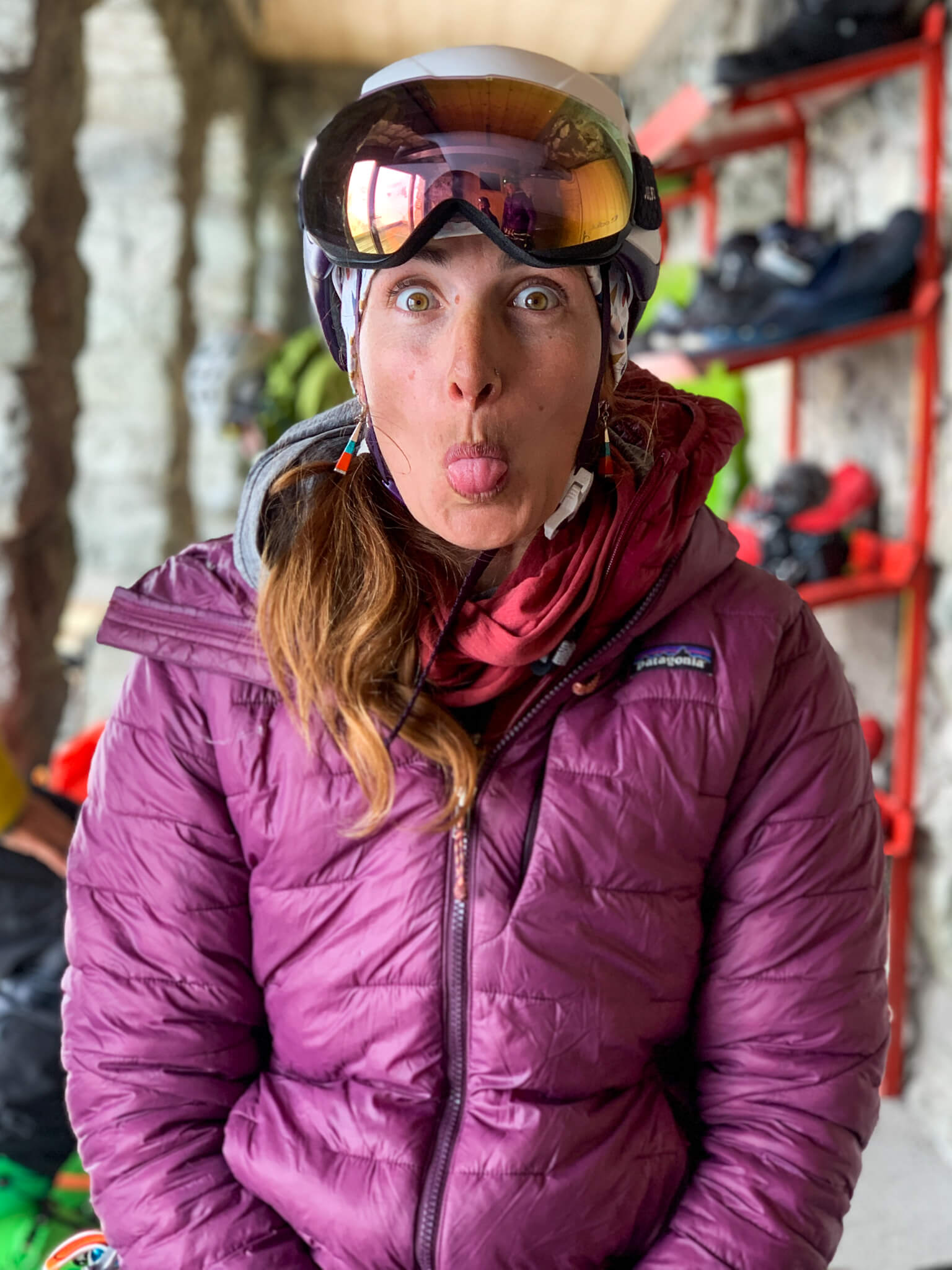
Lise Billon: mountain guide.
A top-level climber, she represents the young generation of female mountaineers. She is a member of the Compagnie des Guides de Chamonix and was awarded the prestigious Piolet d’Or in 2016 for an unprecedented ascent of Riso Patron in Patagonia. She will be guiding the roped party between Chamonix and Zermatt.
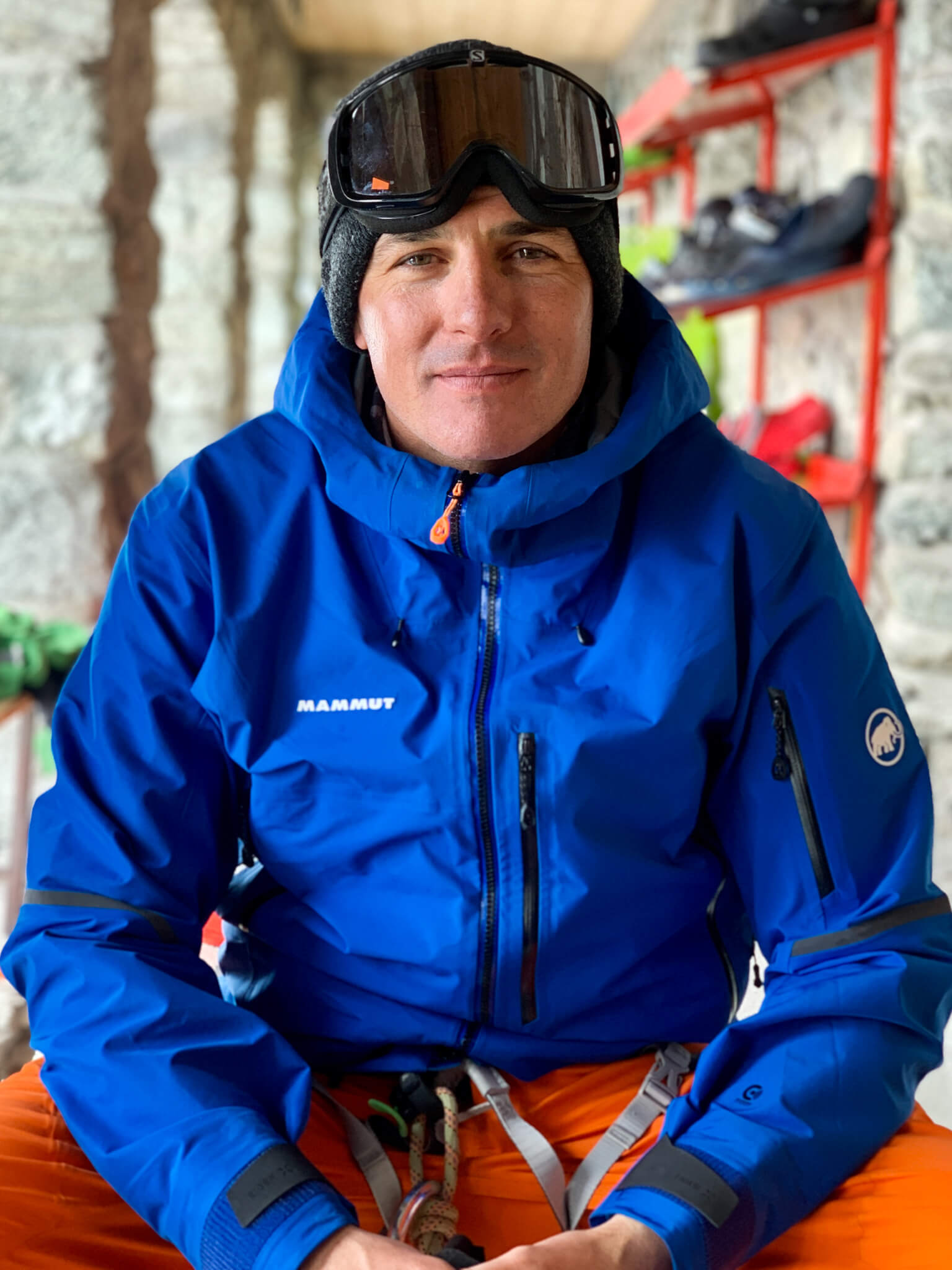
Cédric Gras: writer-traveler.
A mountain enthusiast and geographer by training, he spent many years abroad in the post-Soviet space, but never forgets to return to the Alps, where he cut his teeth. The mountains are at the heart of his latest book, “Alpinistes de Staline” (Prix Albert Londres 2020).
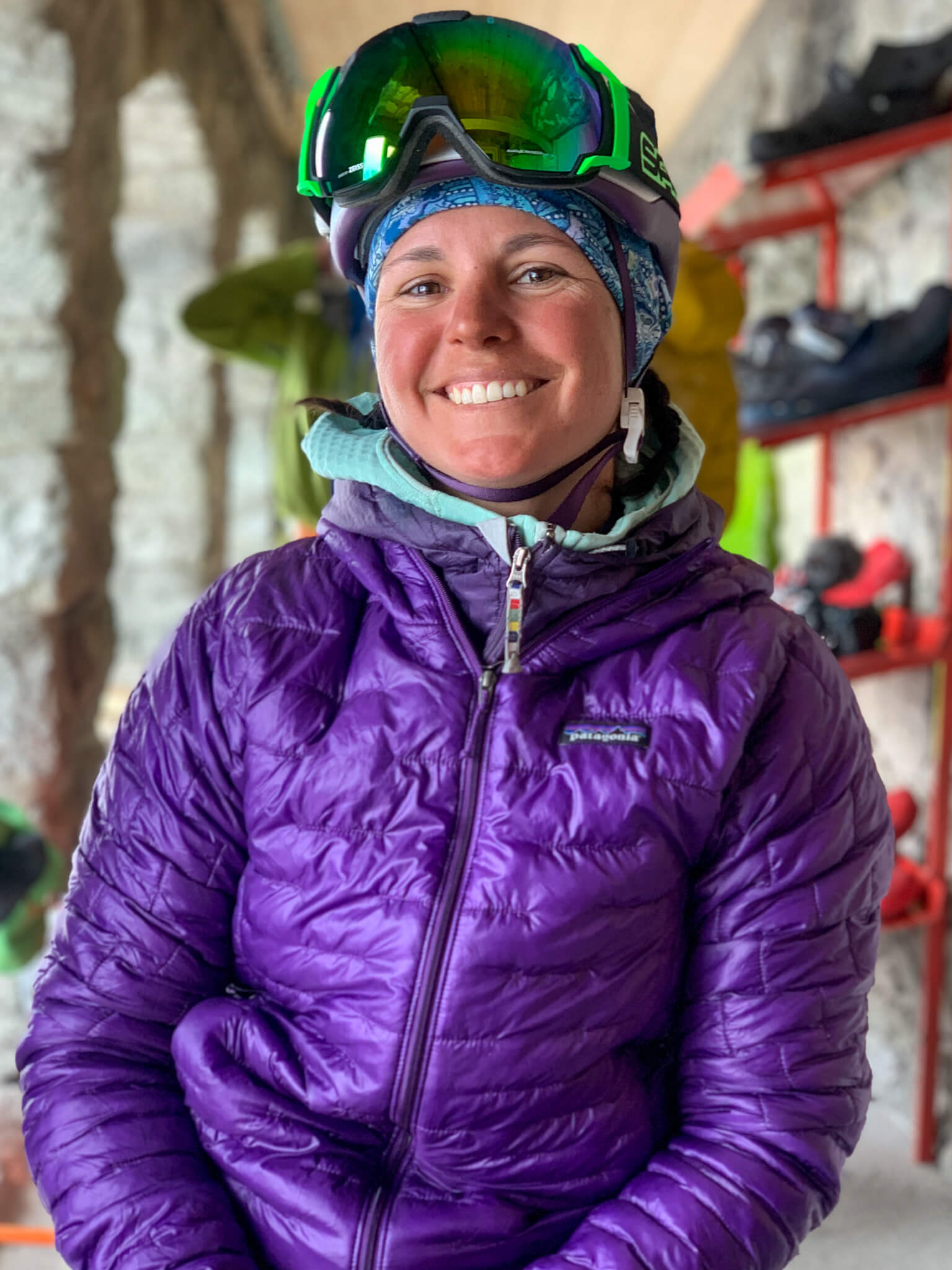
Inès Dussaillant: glaciologist.
Doctorate in glaciology and geomorphology, she is a researcher in the Department of Geography at the University of Zurich. Originally from Chile, she became a researcher out of a passion for mountains and the telluric powers that forge them. Her research takes her to glaciers in the Alps and around the world.
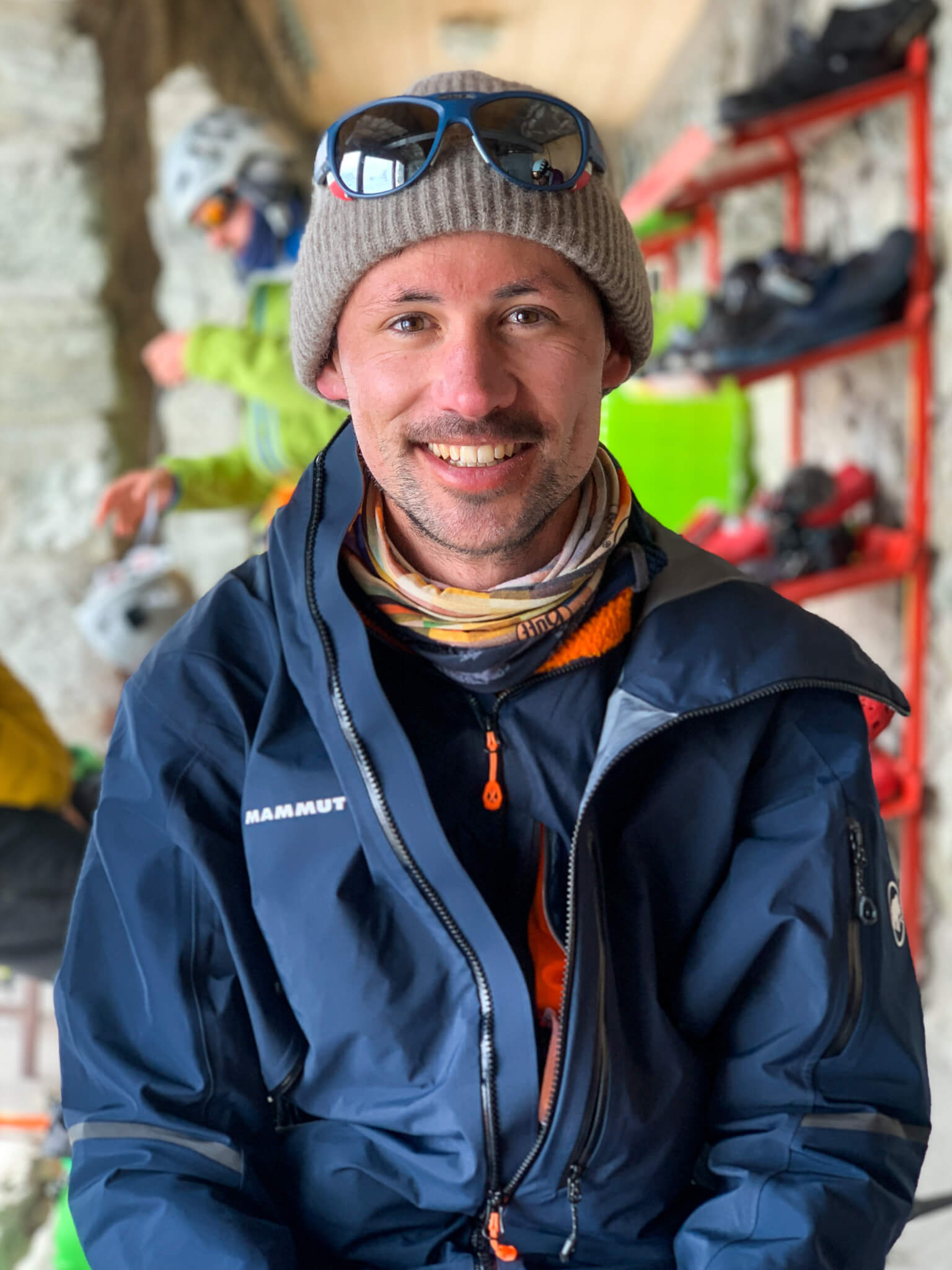
Matthieu Tordeur: polar adventurer. The youngest of the bunch, I’m no stranger to the polar world, having visited the Arctic and Antarctic several times. This time we’re heading for the Alps. I’ll be doing my best to show that adventure doesn’t have to be remote to be intense.
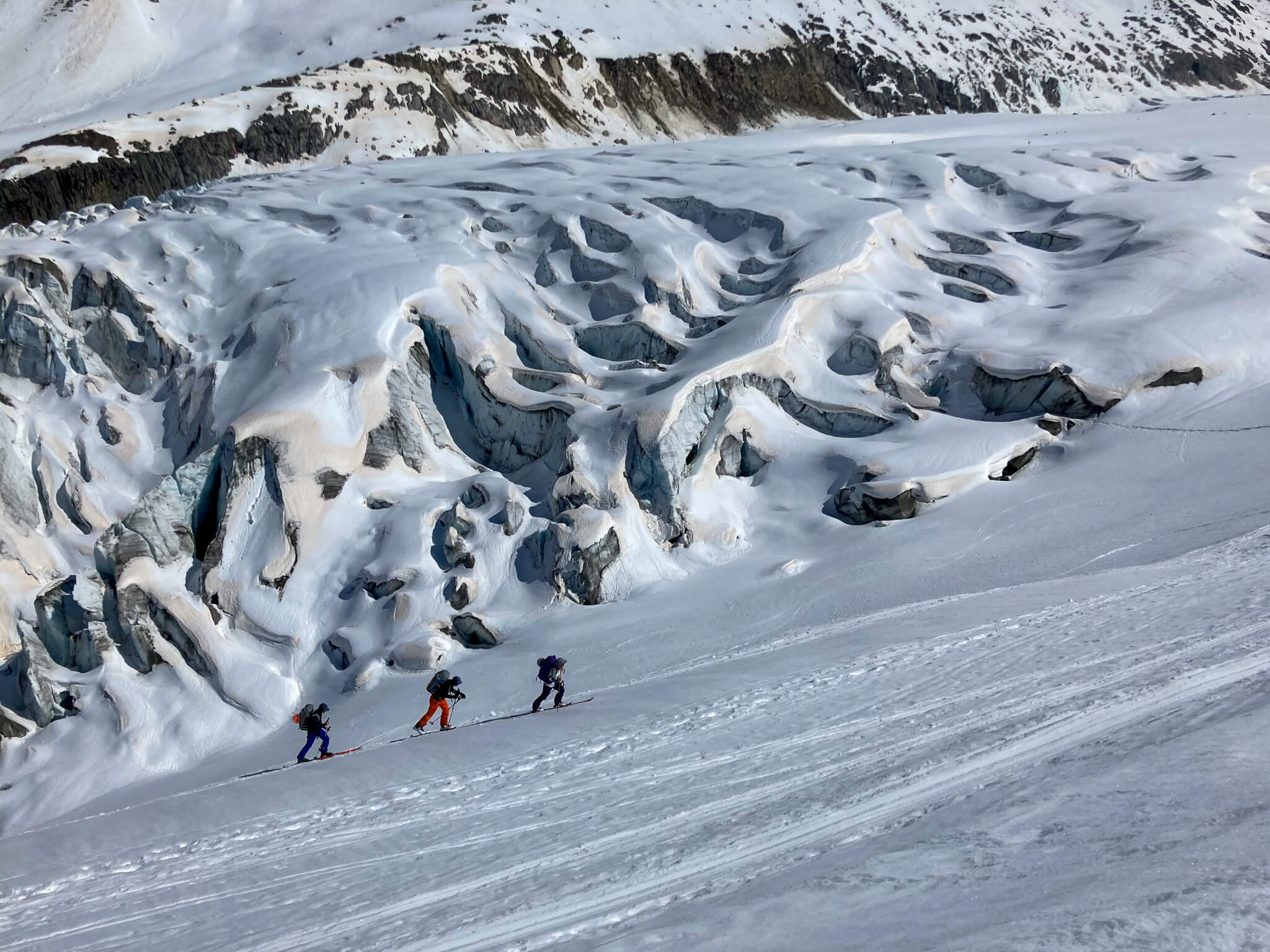
After a day of gathering our gear and studying our itinerary, we leave the Chamonix valley in bright sunshine for the Argentière glacier.
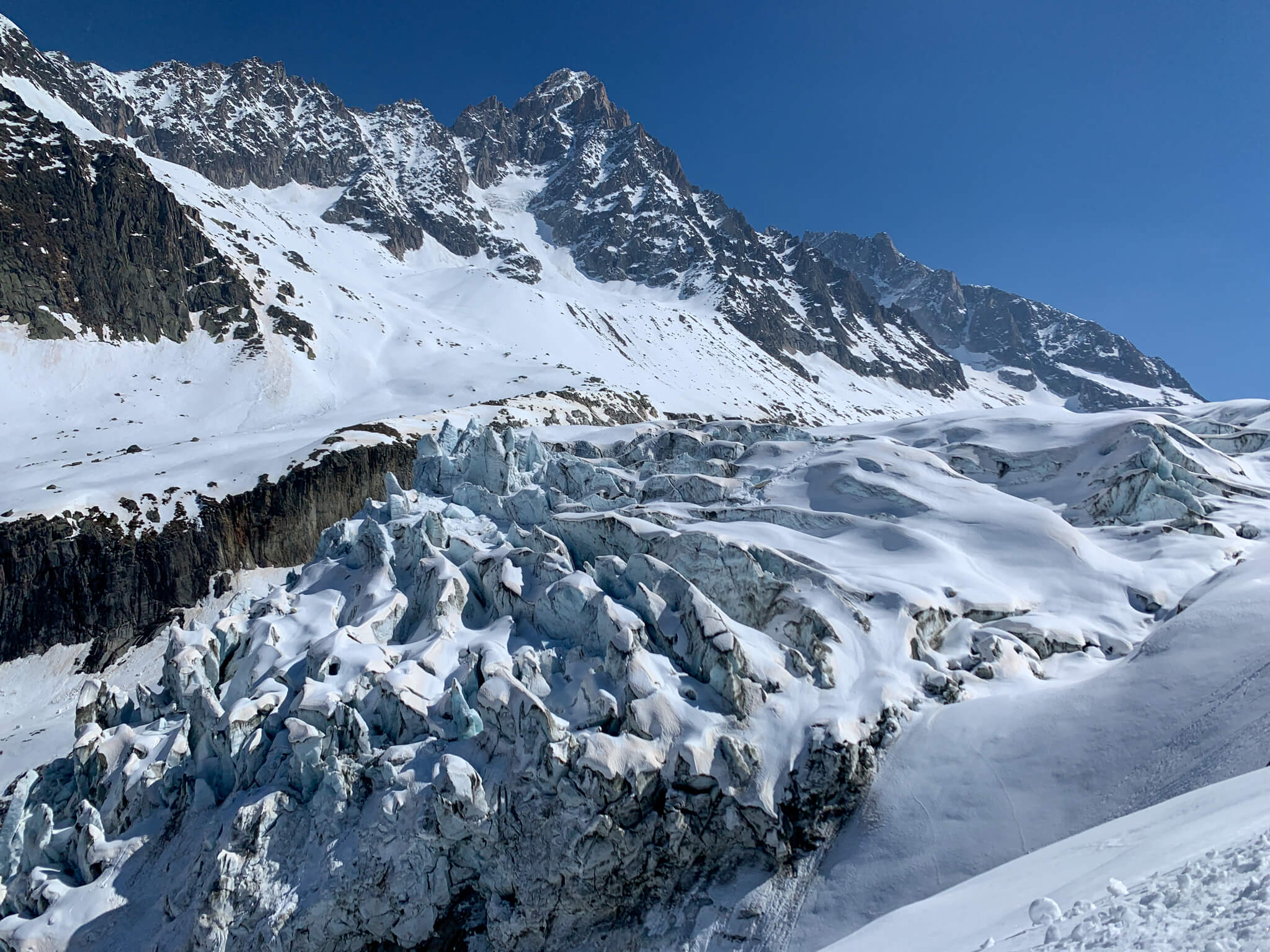
At the edge of the basin, the seracs are very large and, seen from above, they present a maze of impressive crevasses.
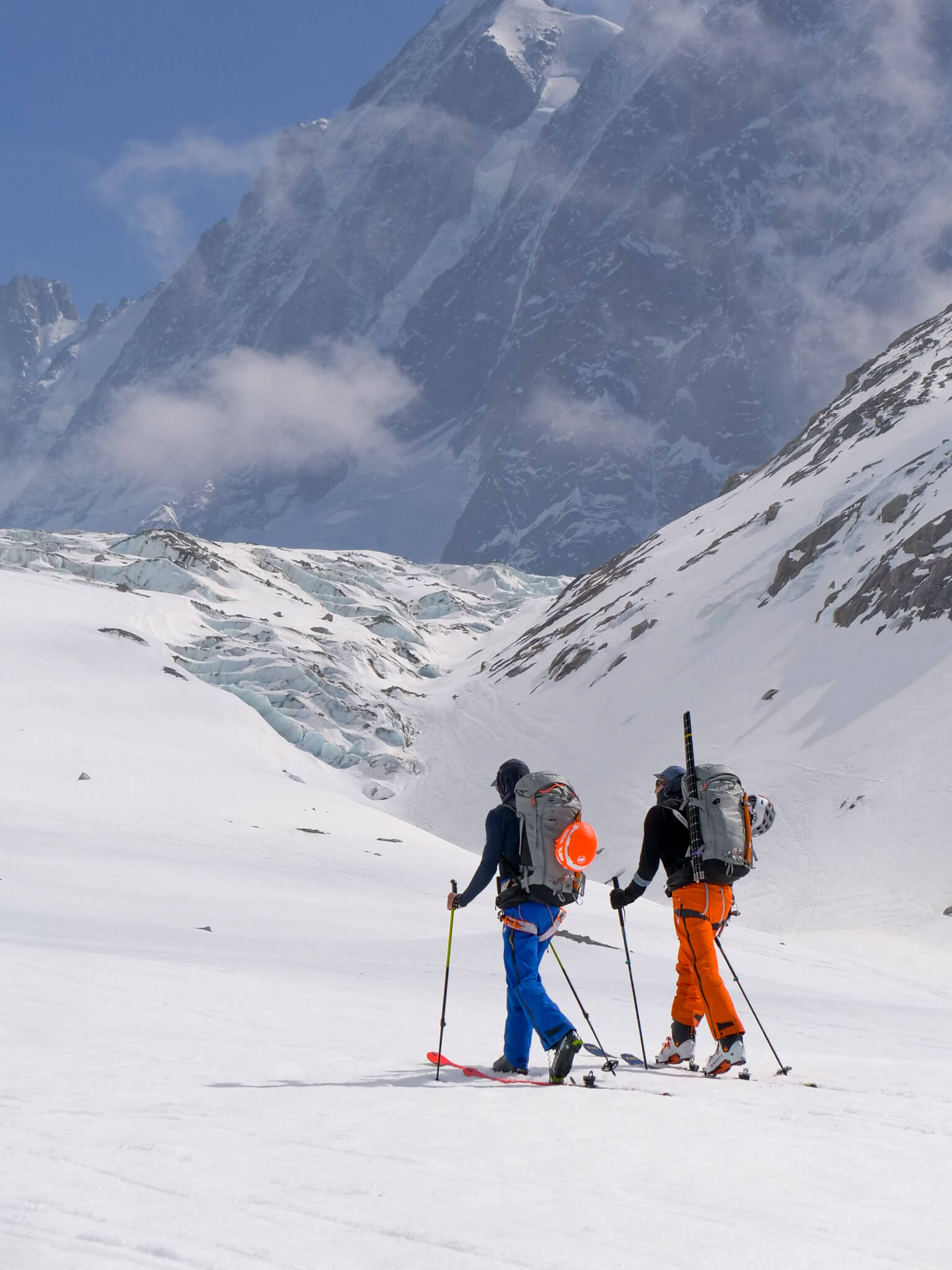
Cédric and I are loaded up for ten days of ski-mountaineering: crampons, harness, ice axe, helmet, avalanche transceiver, shovel, probe… Cédric is carrying the probe on his pack so we can take snow depth readings on the glaciers.
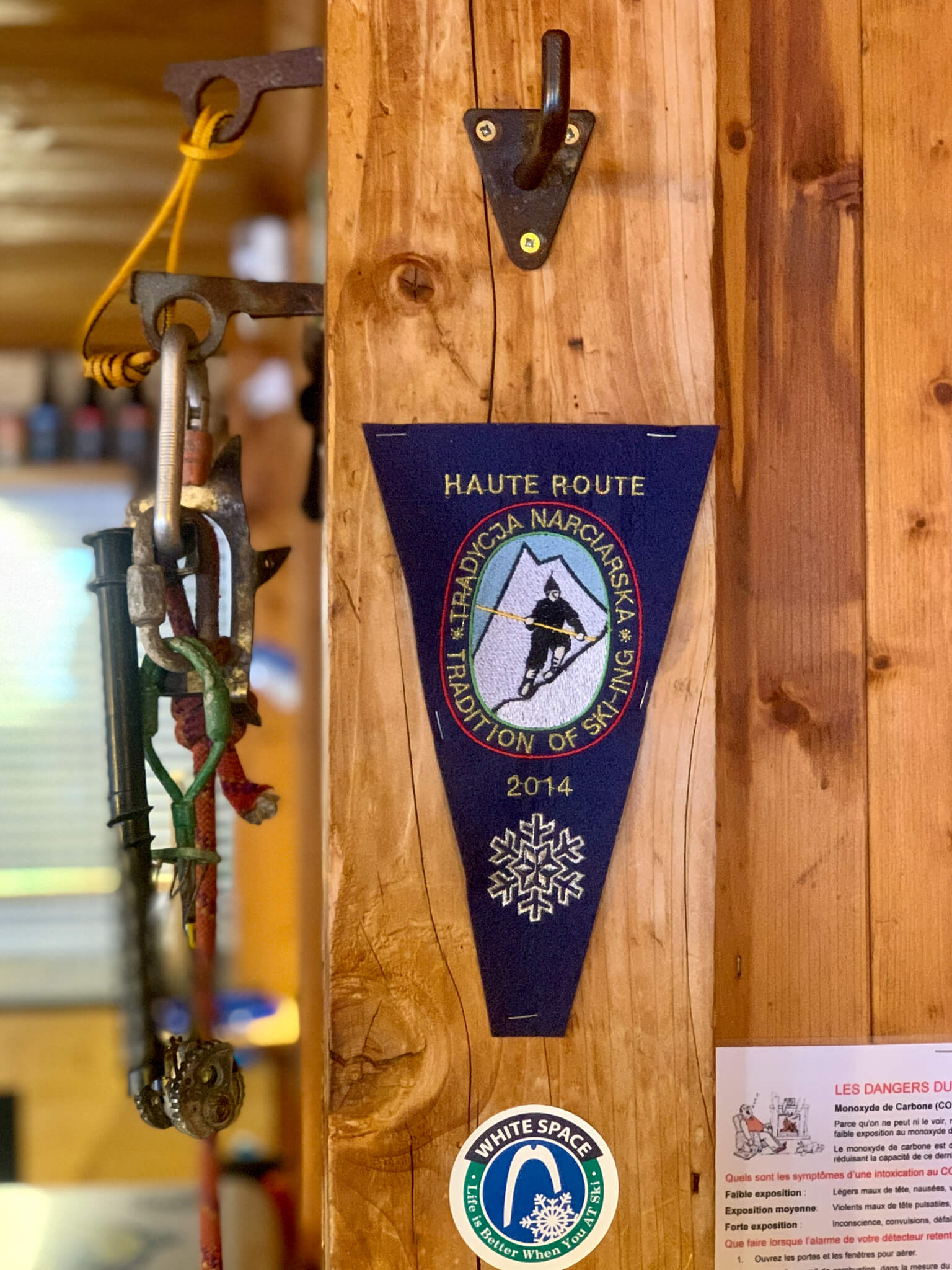
The Haute Route was first covered in 1903 by Dr. Payot and his guide, the famous Ravanel le Rouge, when skiing was just arriving in the Alps. A feat whose value is forgotten today.
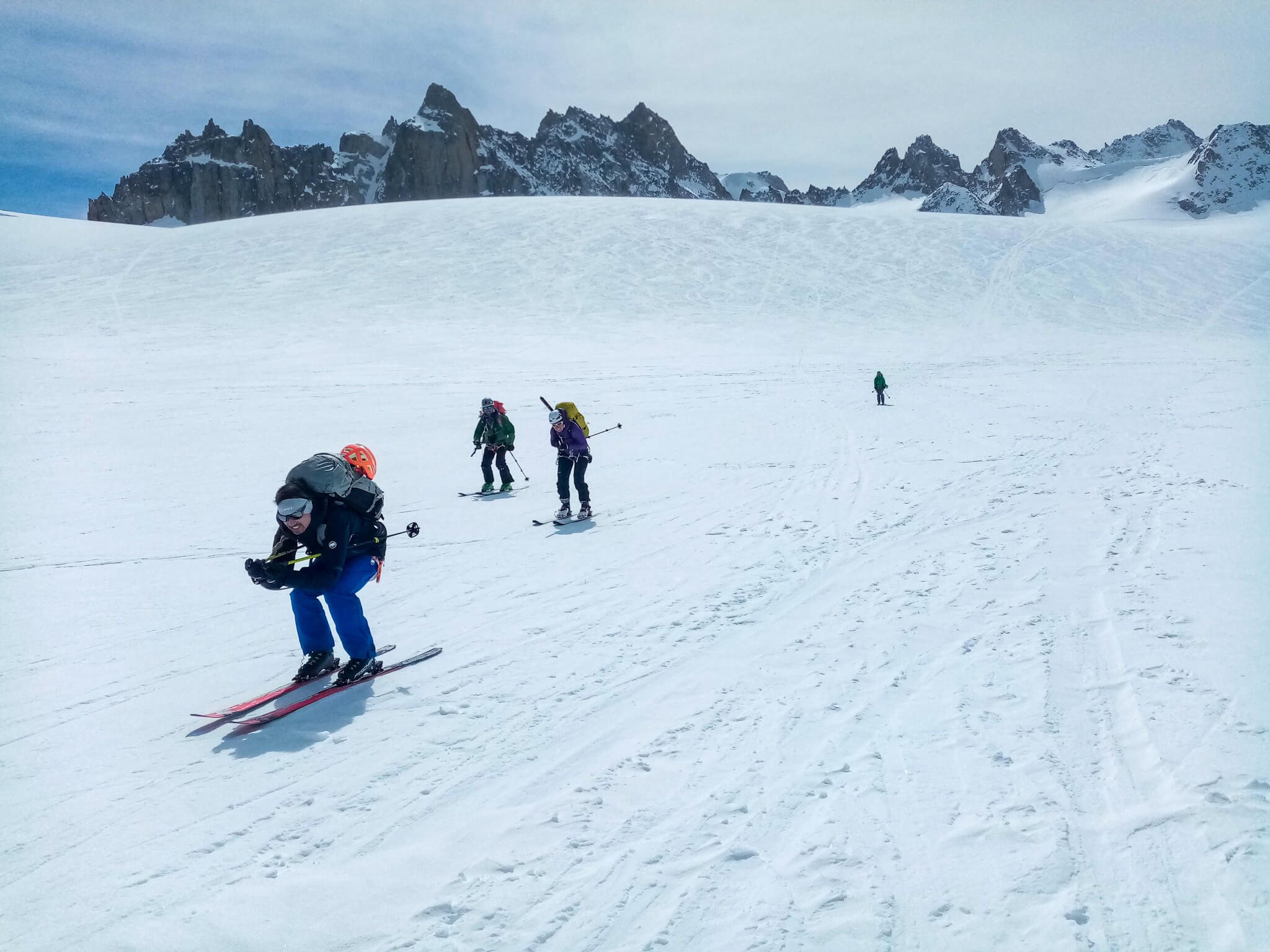
Full steam ahead on the Trient glacier, towards the hut of the same name.
” Under the snow, the world retreats. A few Chinese brushstrokes remain. In the white dream, peaks, walls, crests and pillars float, reduced to their expressive lines. Snow enhances what it touches, which is beauty. Pure, it reveals what is enough. Magic, it fills voids with an invisible principle, cancels out imperfection, preserves the salient. Whiteness forgives the unnecessary – by masking it. “
– Blanc, Sylvain Tesson
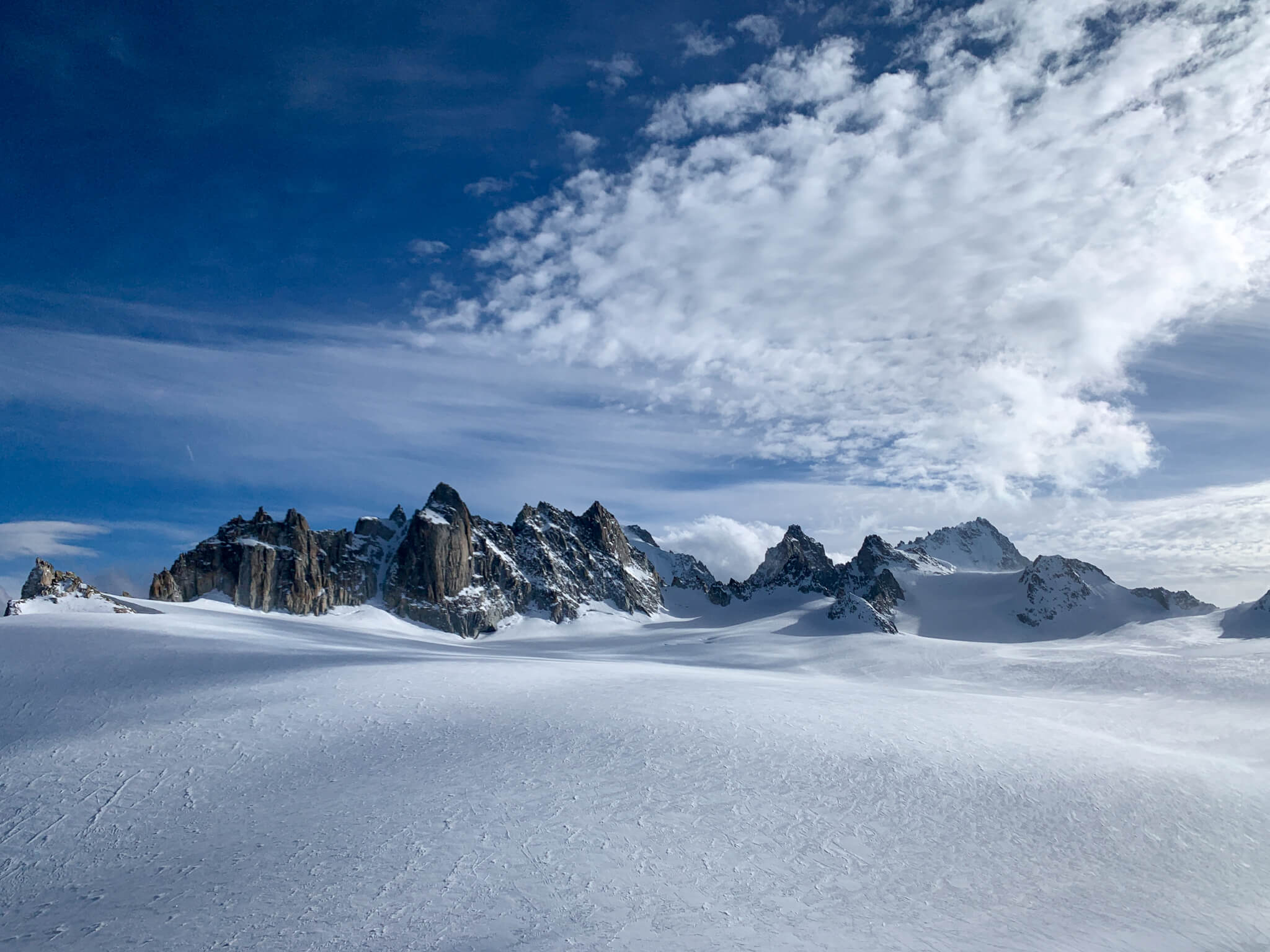
View of the Trient plateau and the Fenêtre de Saleina, through which we passed.
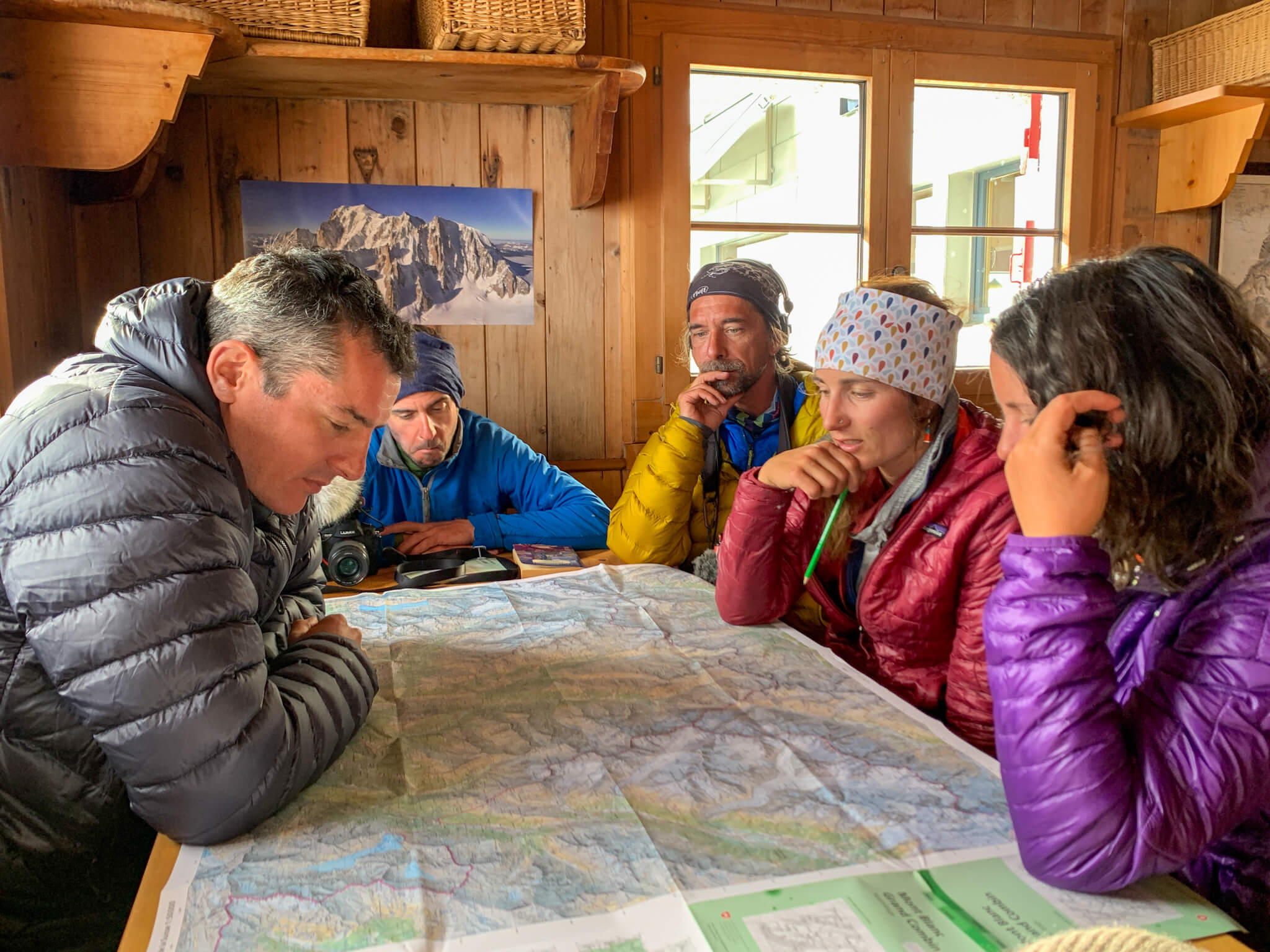
Snug and warm inside the Trient hut at 3,170 m altitude, we unfold the map to prepare the next stage of our itinerary, watched by cameramen Julien and Pierre.
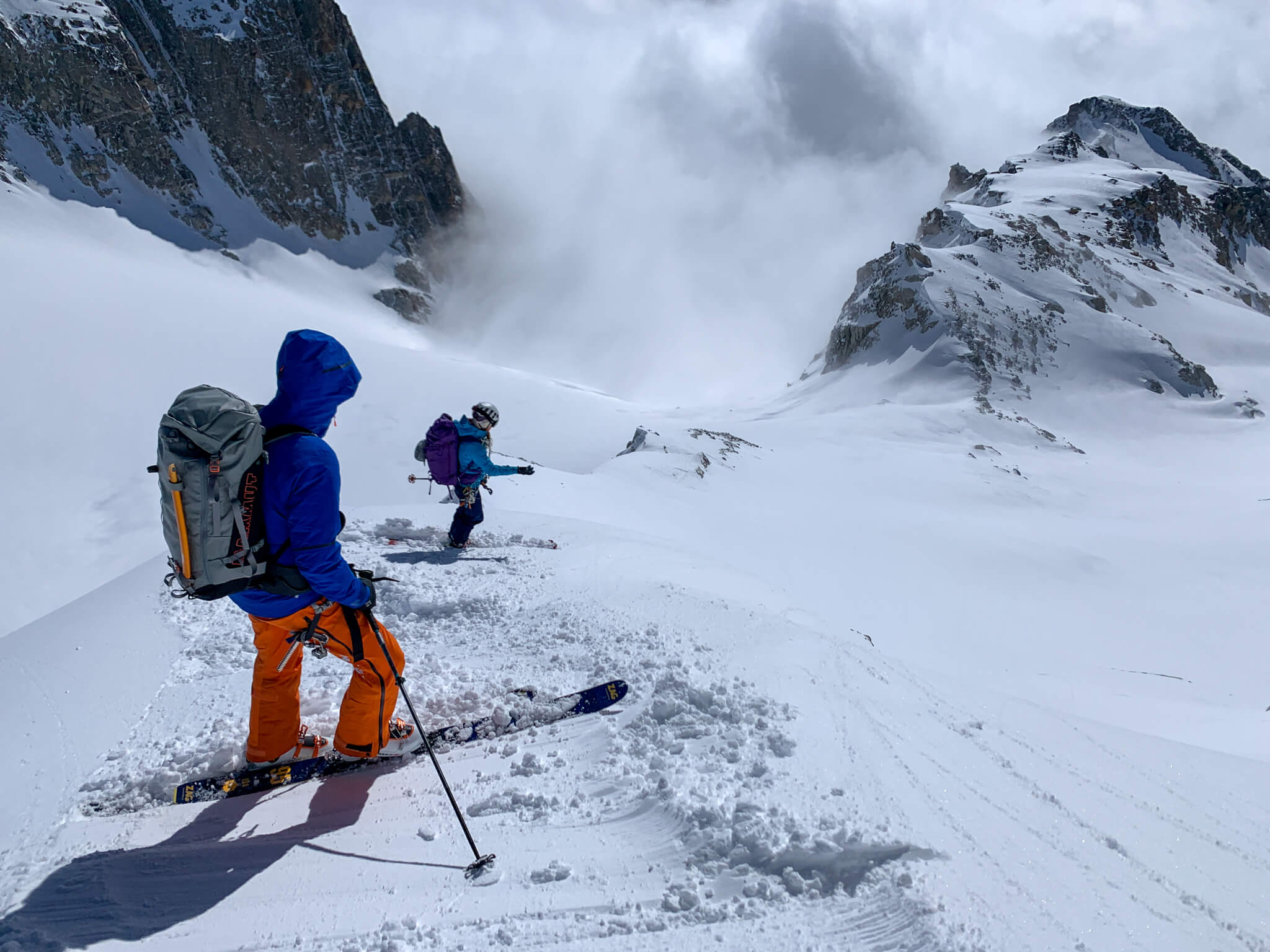
It’s been snowing heavily and we have to choose our route on the immaculate slopes. Lise, at the head of the procession, is looking for a way down under the sea of clouds.
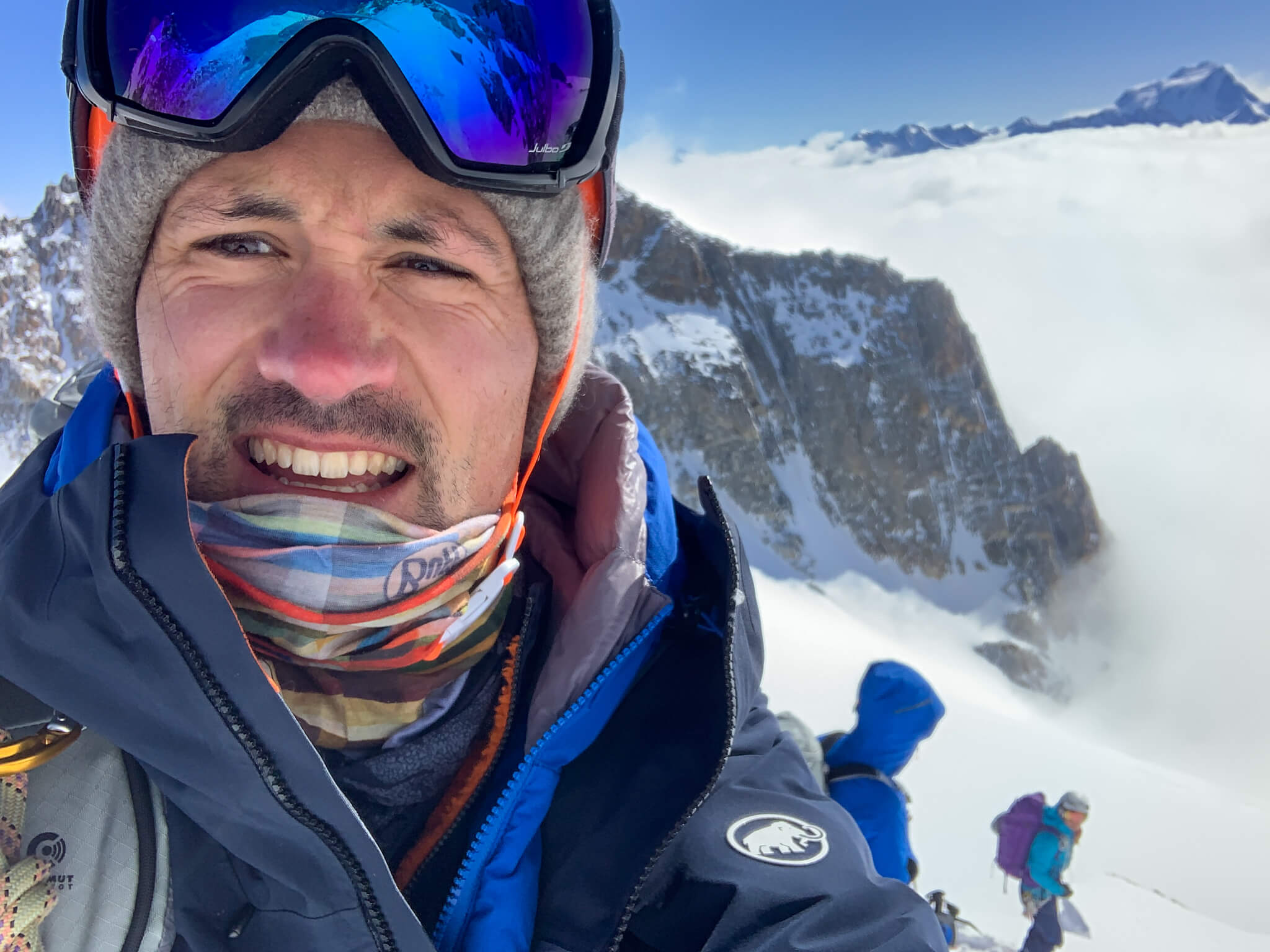
Happy skier.
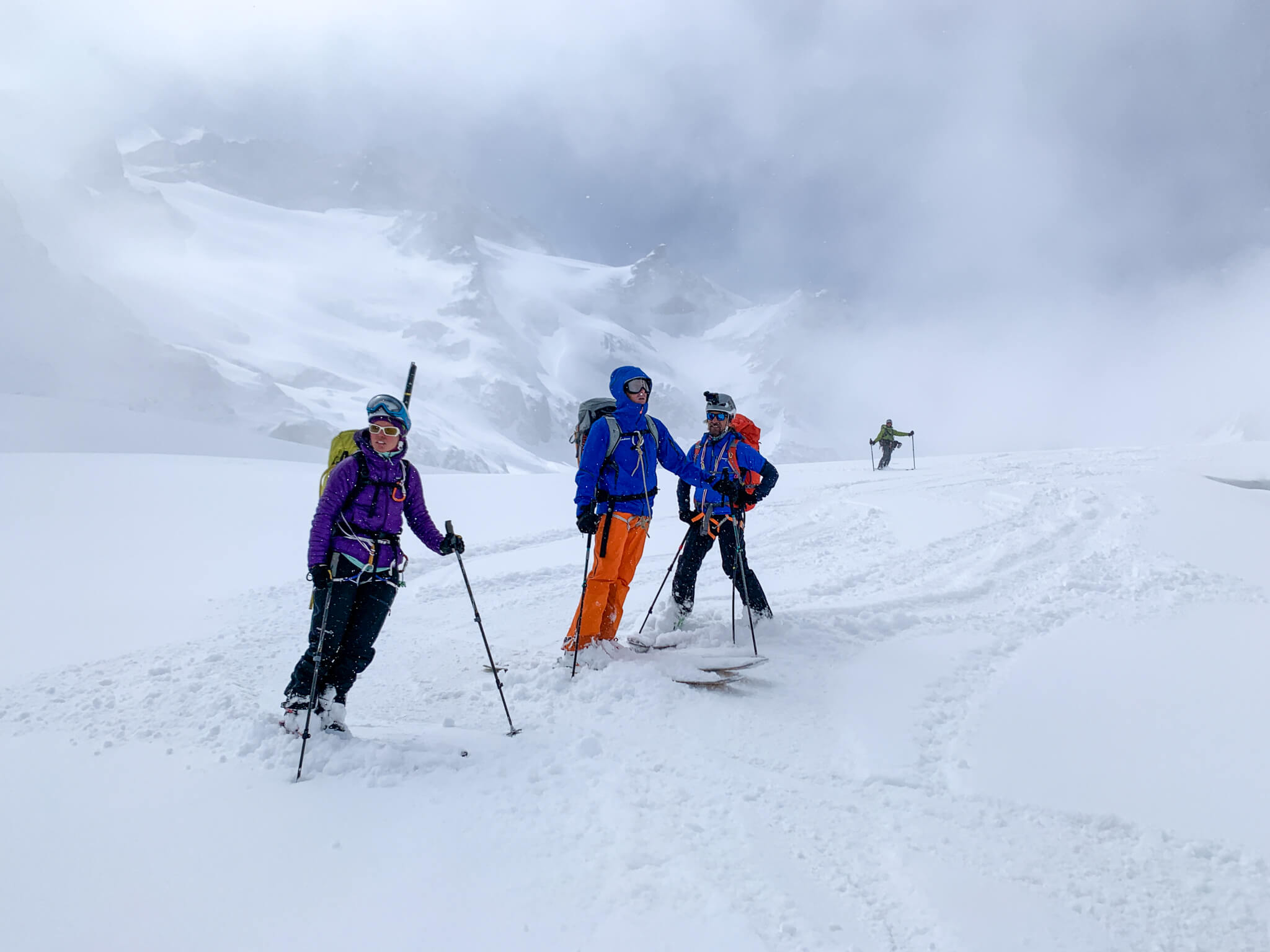
Off-piste, far from marked ski areas, you need to proceed cautiously and check the stability of the snow cover before setting off.
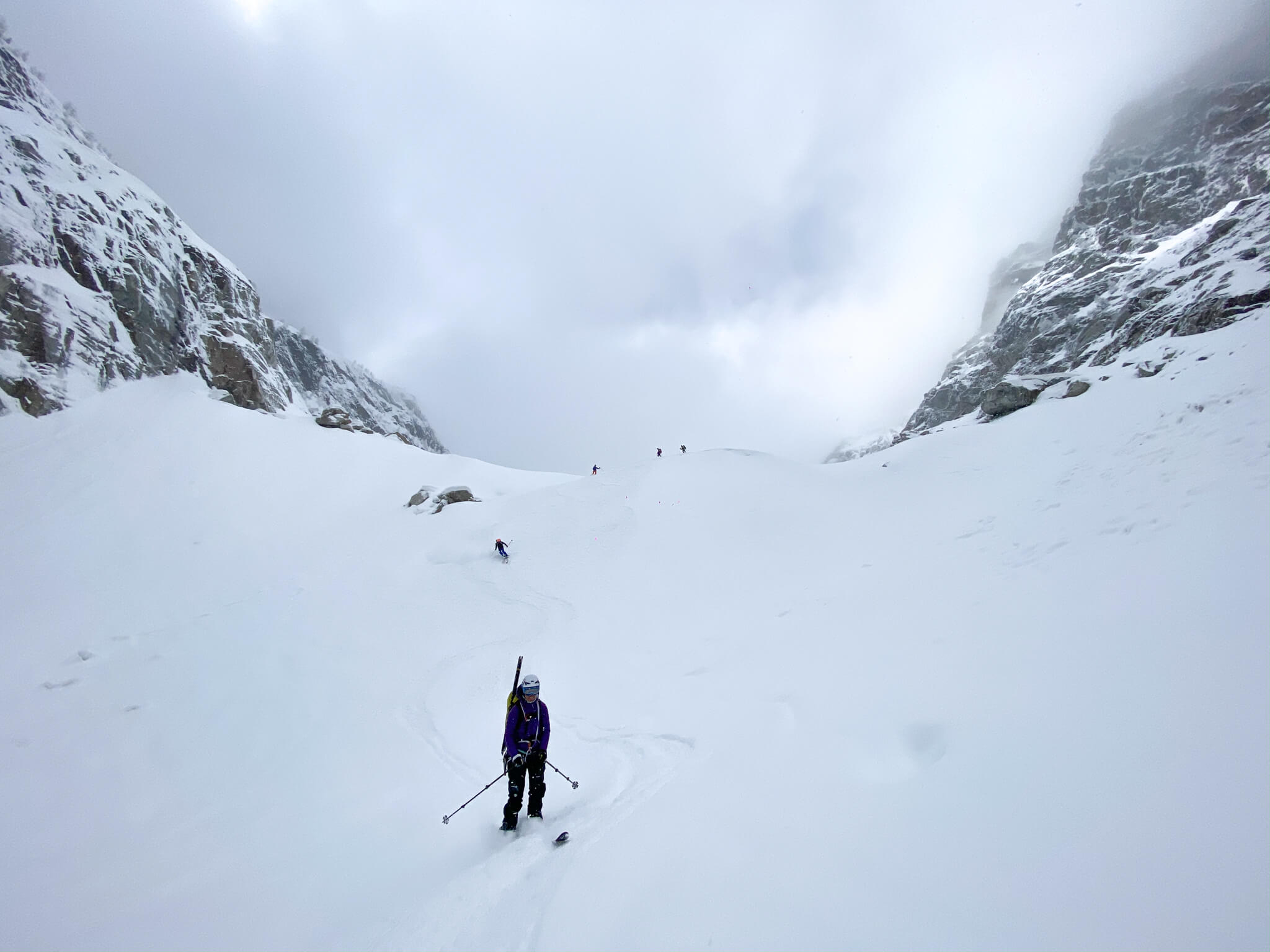
The descent to La Fouly in Switzerland is a treat after many hours spent climbing passes and summits.
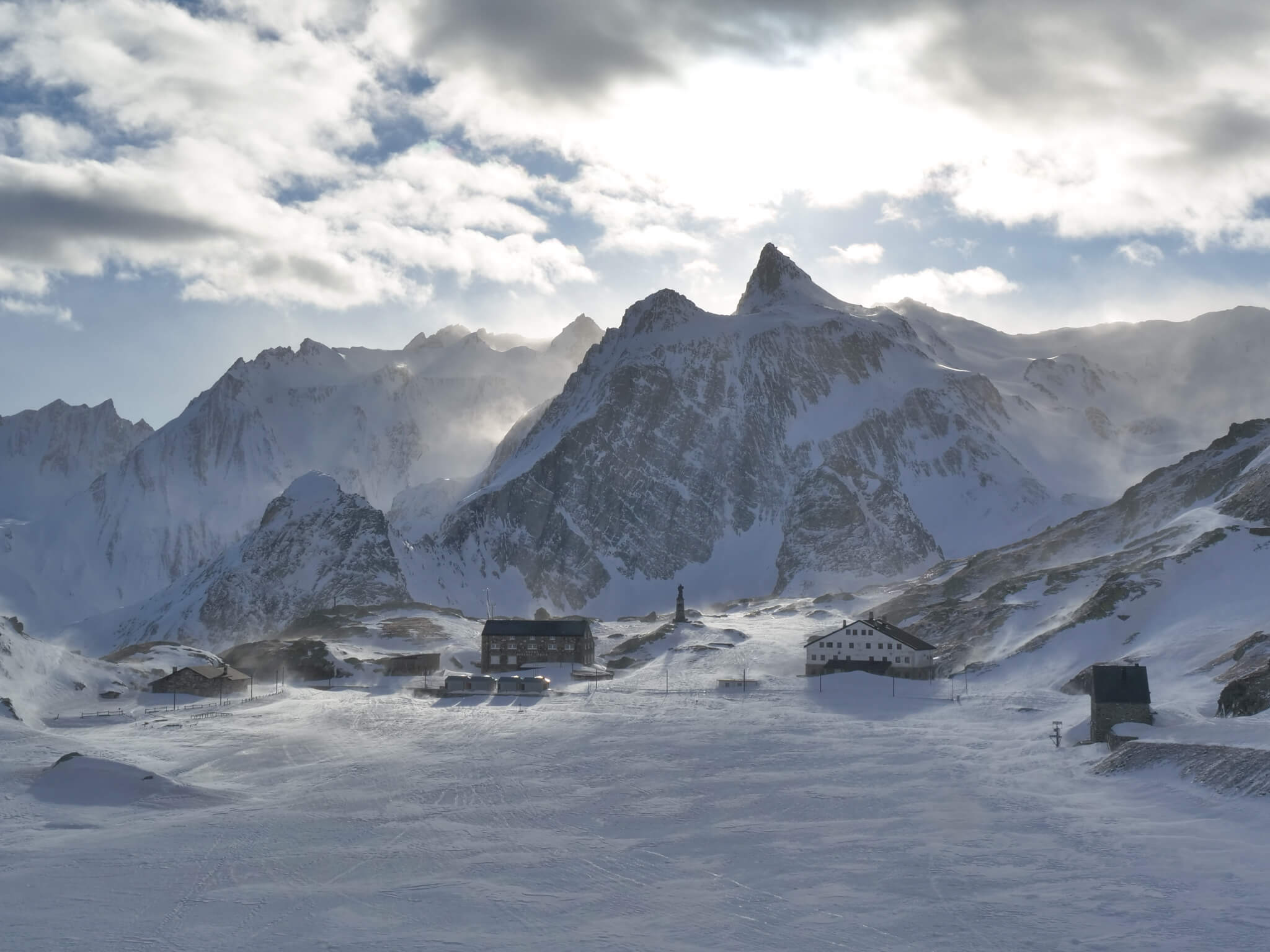
Hospice du Grand-Saint-Bernard at 2,470 meters above sea level. For over a thousand years, a community of canons has offered hospitality and comfort to travelers and pilgrims. We stop here to recharge our batteries.
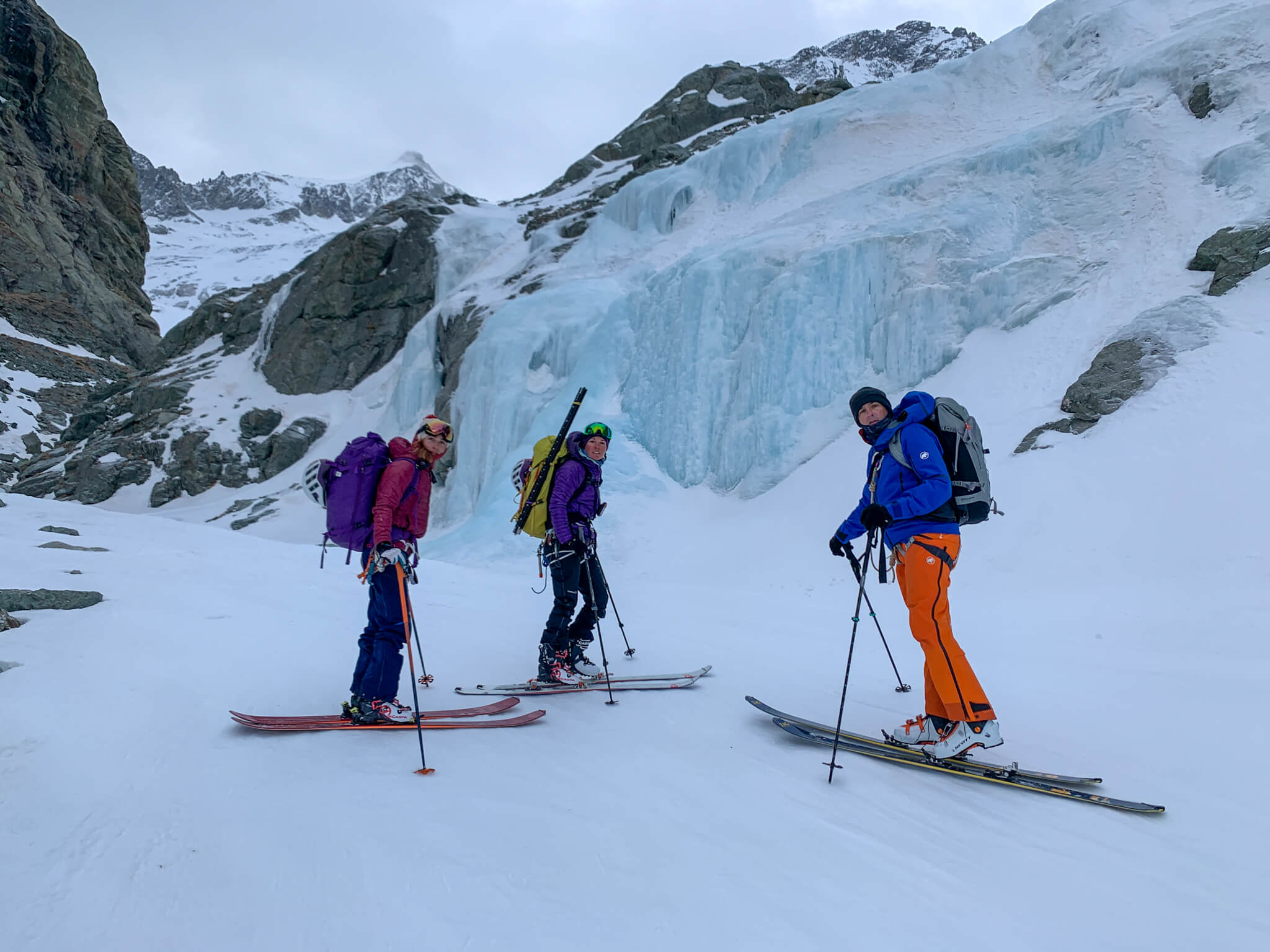
We set off early every morning to climb before the snow turns under the action of the sun.
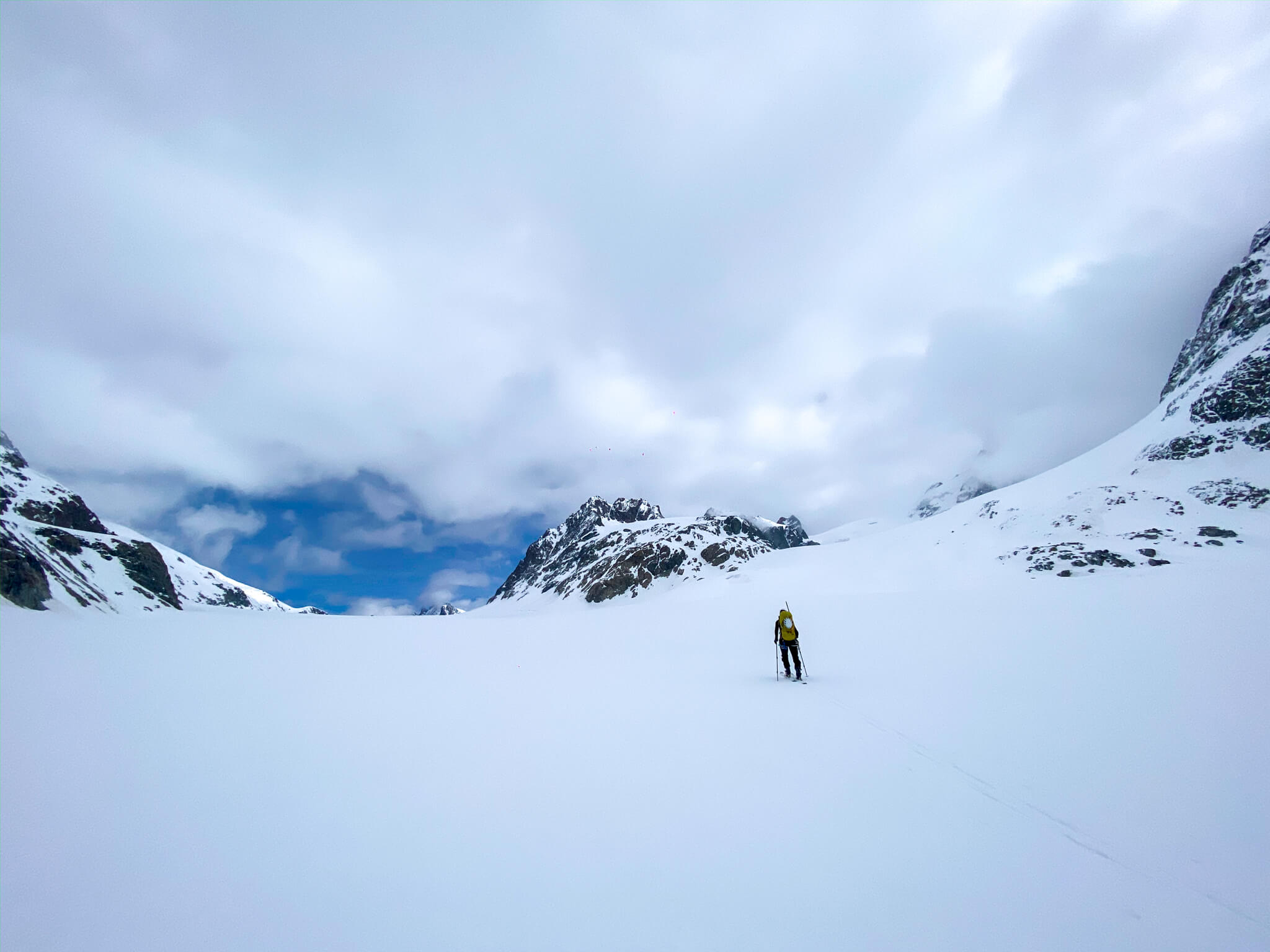
We’re living in a polar world, a real high-altitude interlude, far from the hustle and bustle of the city.
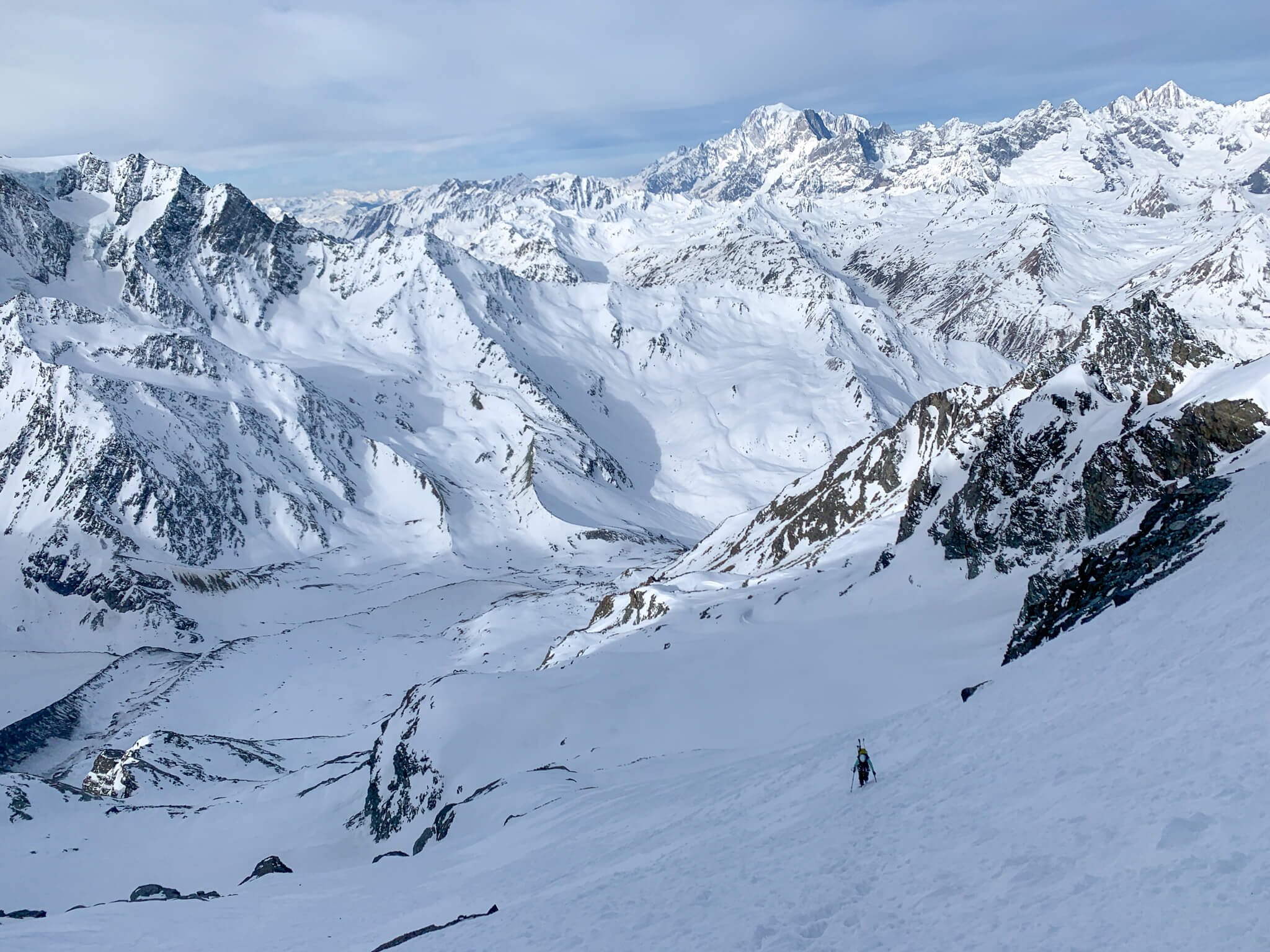
From valley to valley. Every day, we cross passes and accumulate positive altitude changes.
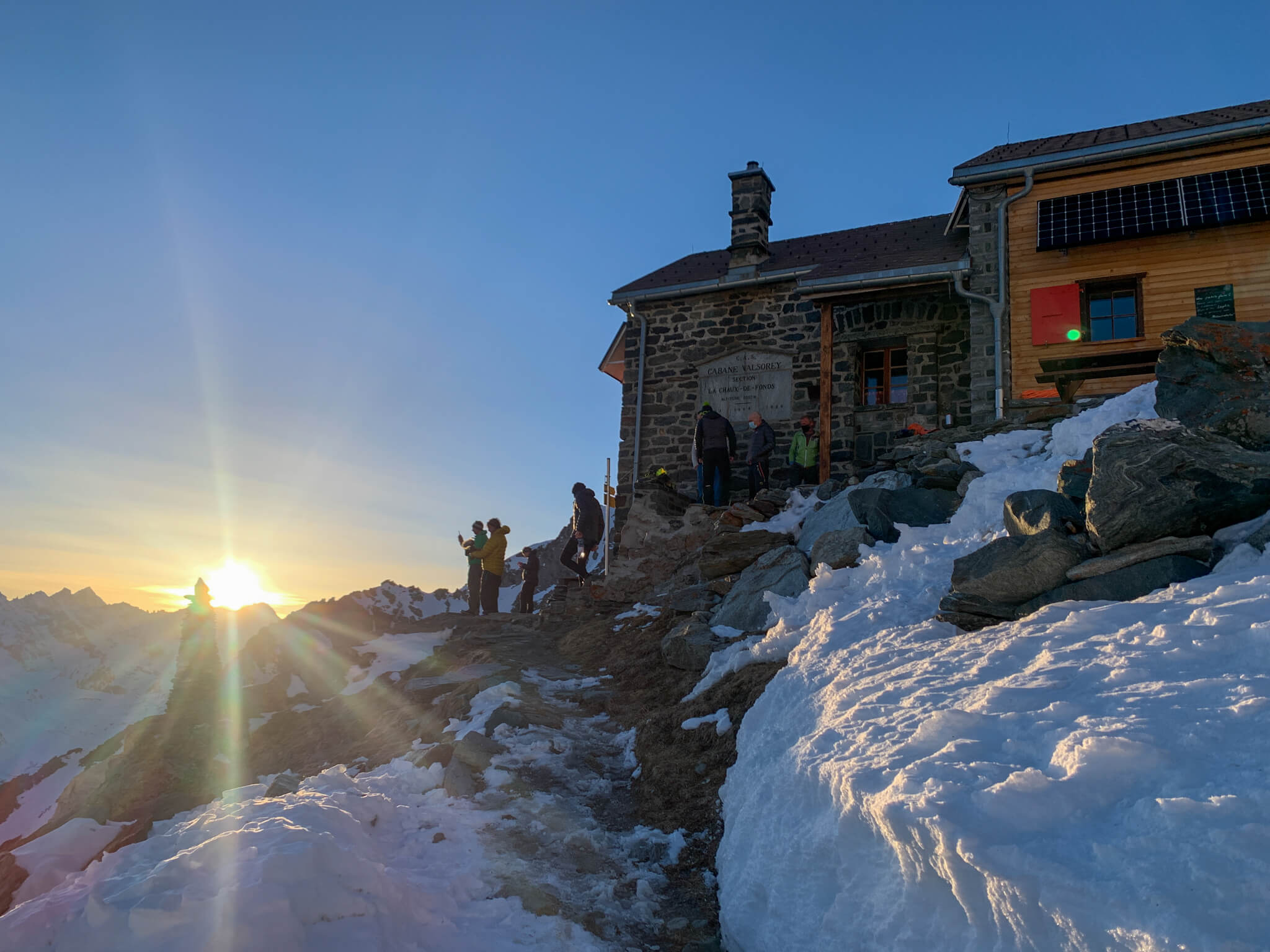
Cabane de Valsorey at the foot of the Grand Combin.
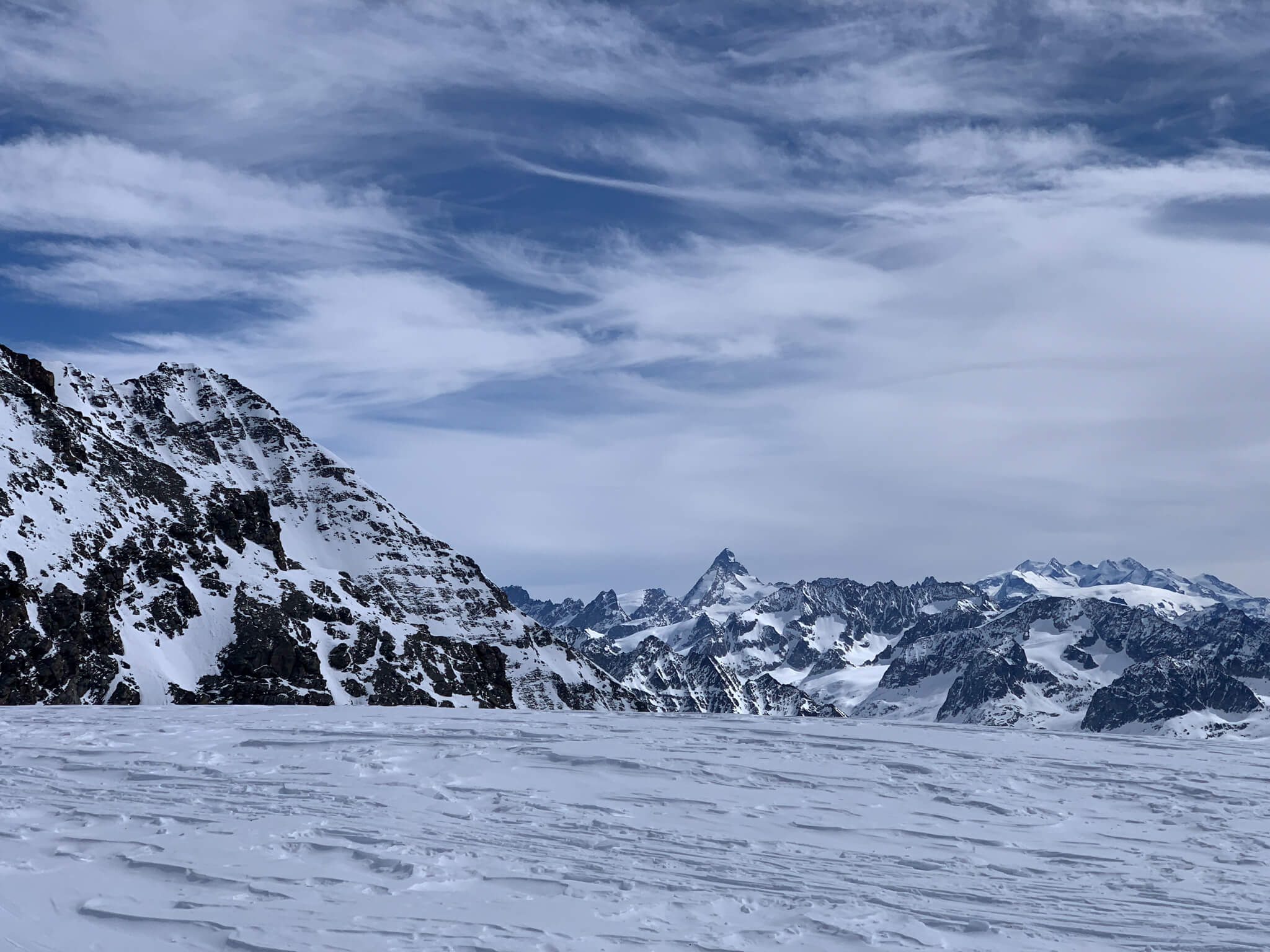
The famous Matterhorn rises to an altitude of 4,478 metres. It is Switzerland’s best-known mountain. Its pyramidal shape inspired the Toblerone chocolate company.
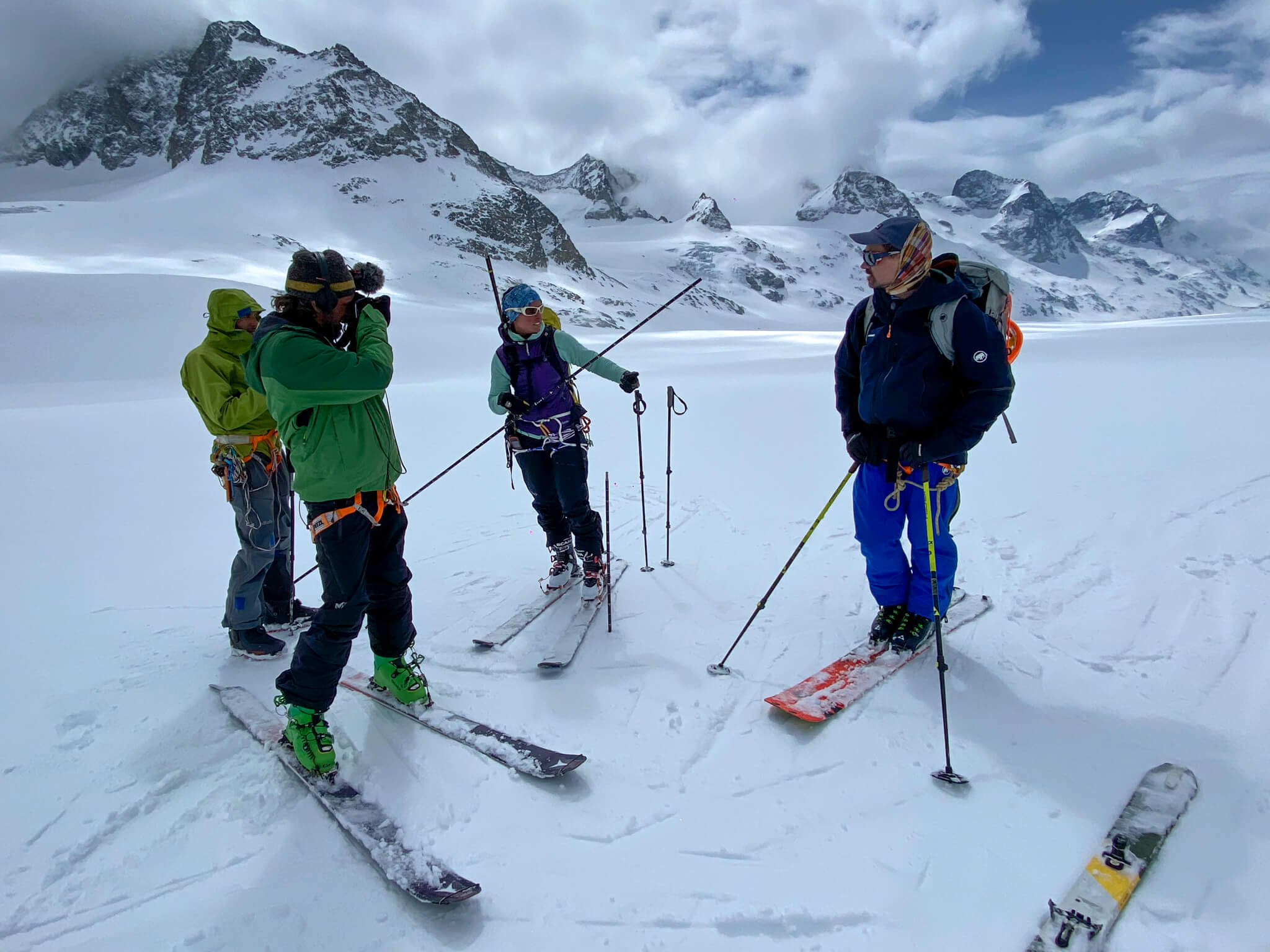
In front of Pierre’s camera, Inès takes snow depth readings on the Otemma glacier. It is being extensively studied by the University of Zurich, for which she works, and she will be able to compare her measurements with older ones to assess the glacier’s state of health.
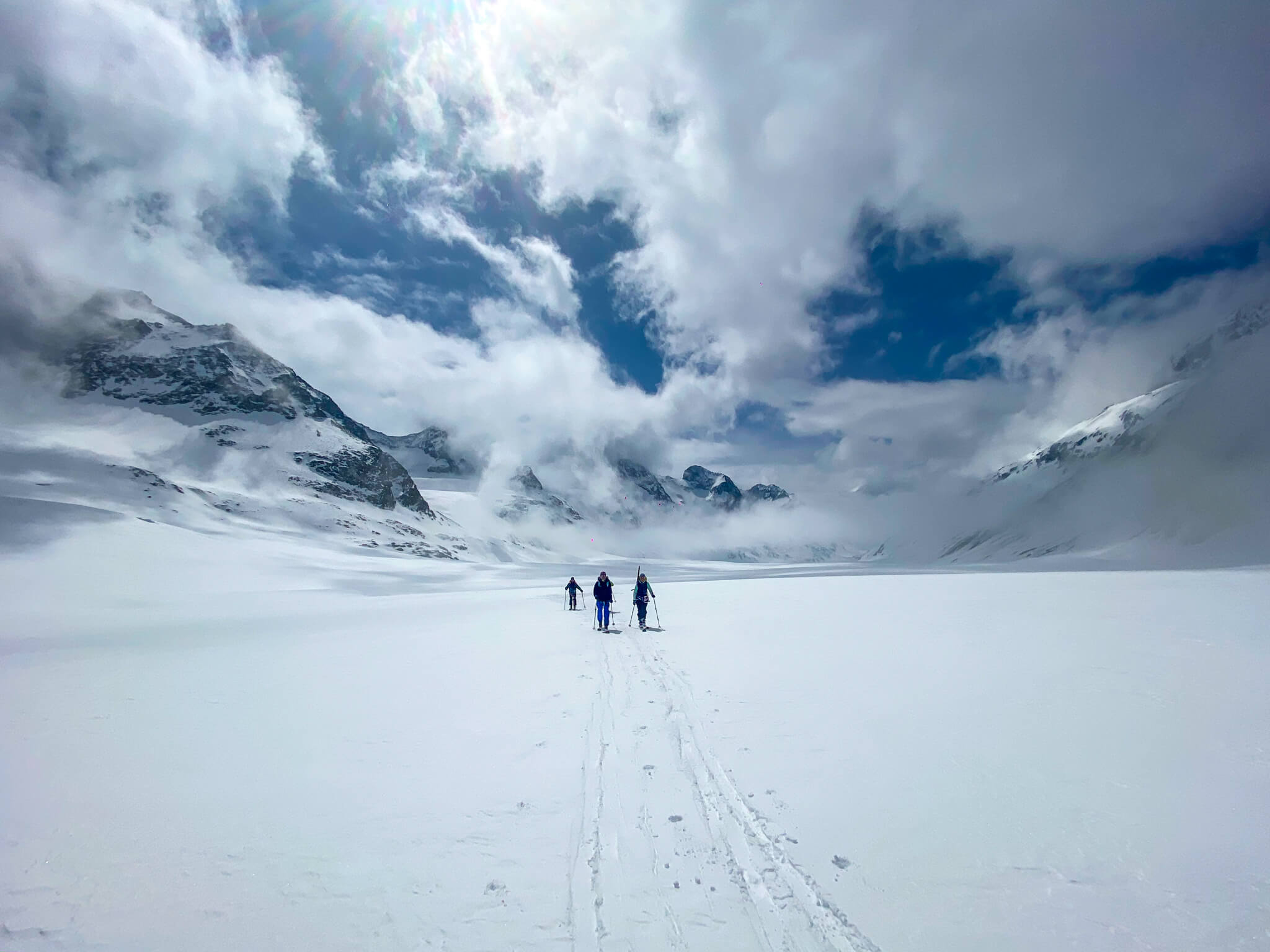
For 8 kilometers, we climb the entire Otemma glacier. At regular intervals, we stop to take more measurements.
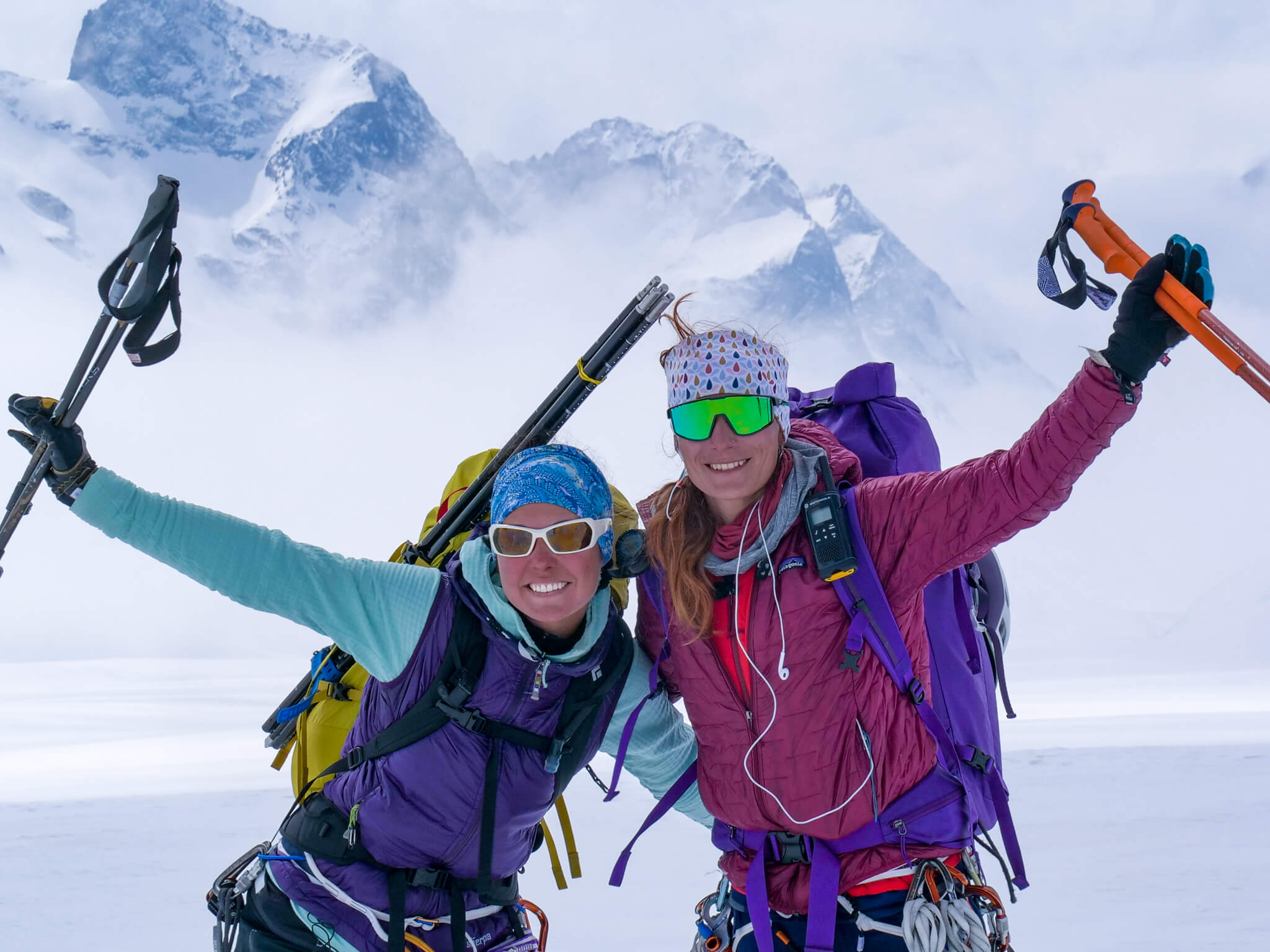
Inès and Lise.
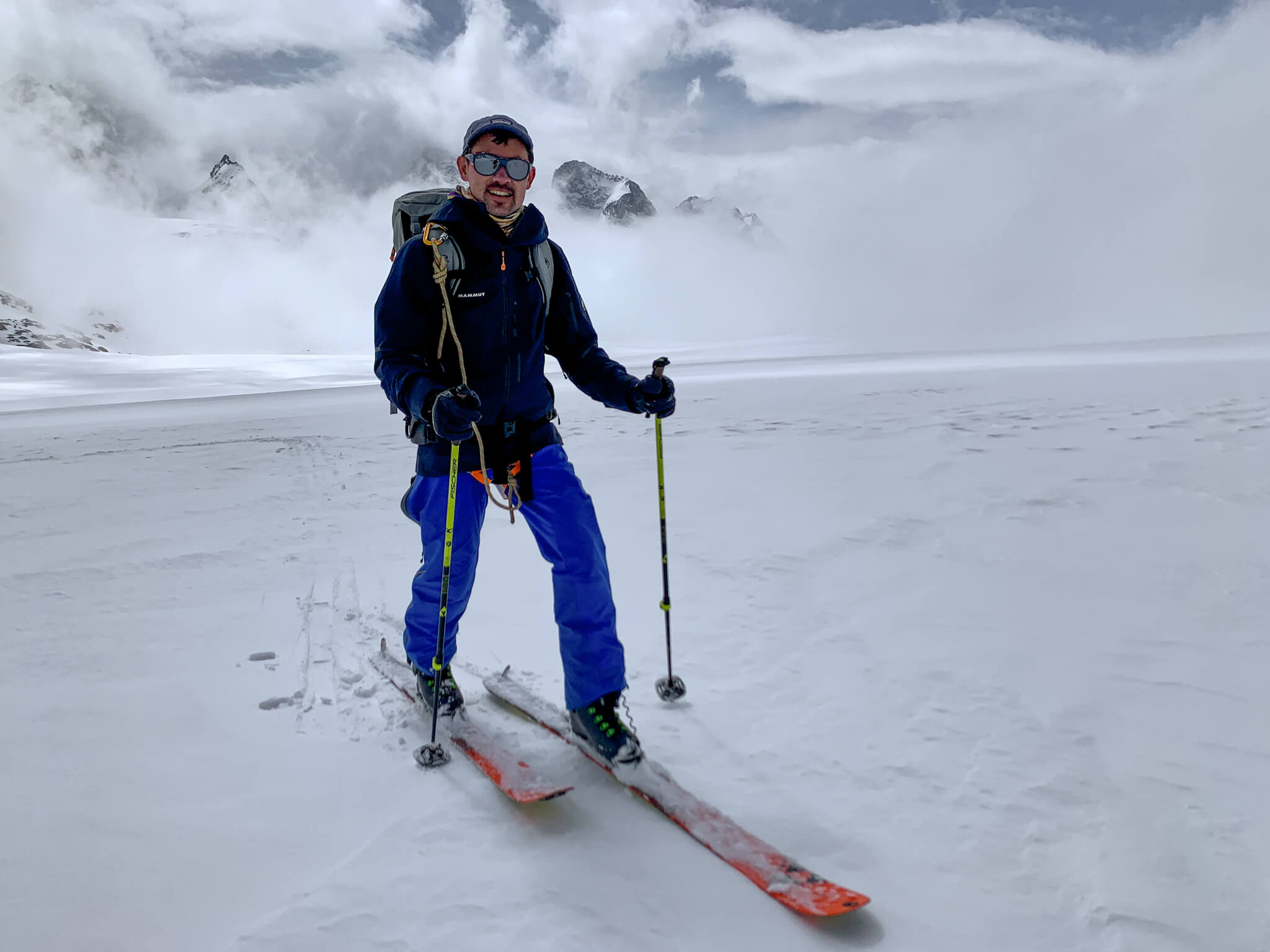
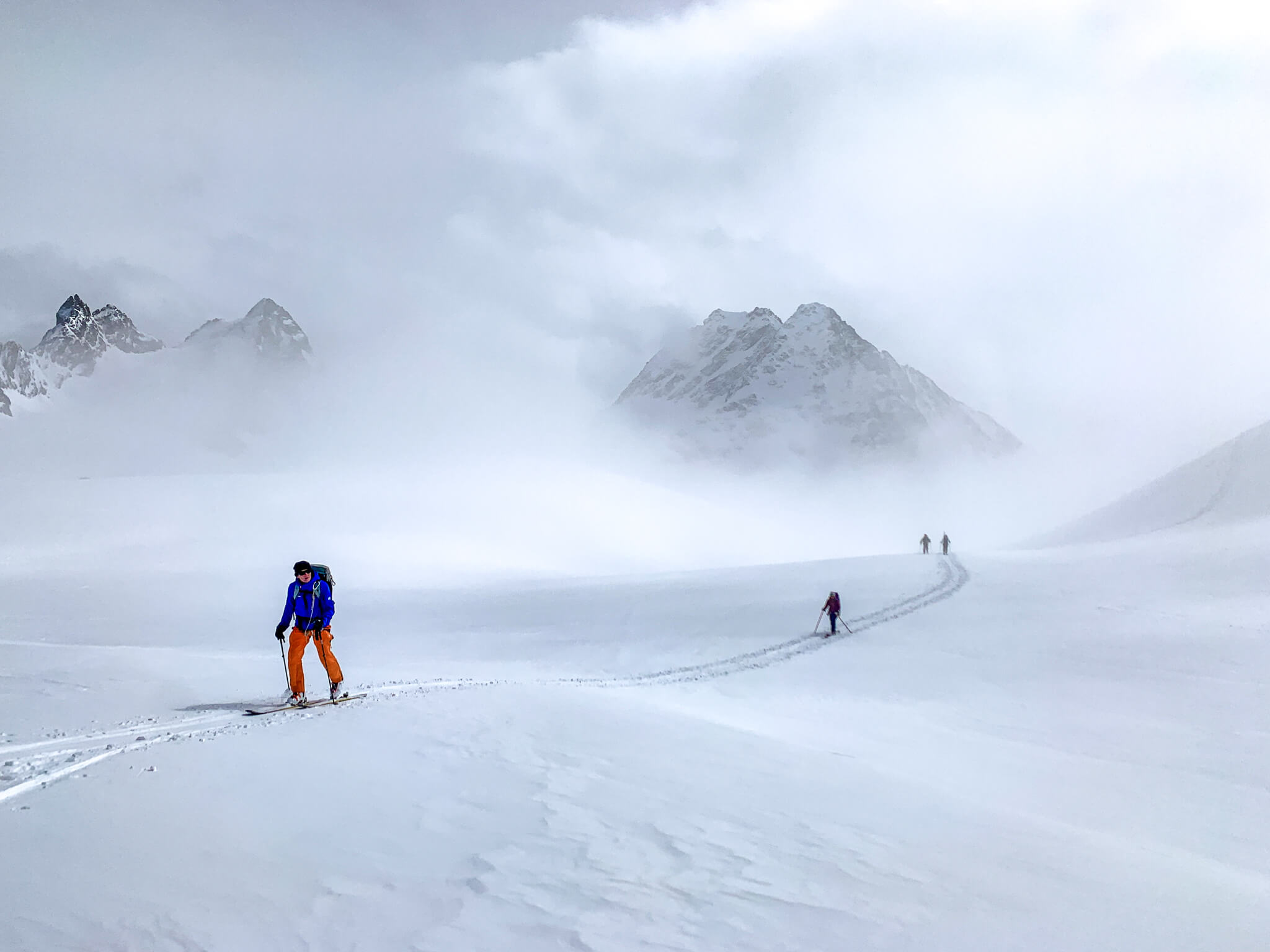
As you approach the Vignettes hut, you can’t pass by without thinking of the drama that played out in April 2018. A group of 10 hikers lost their way in a storm near the hut and were forced to bivouac. 7 people, including the guide, lost their lives. The worst accident on the Haute Route.
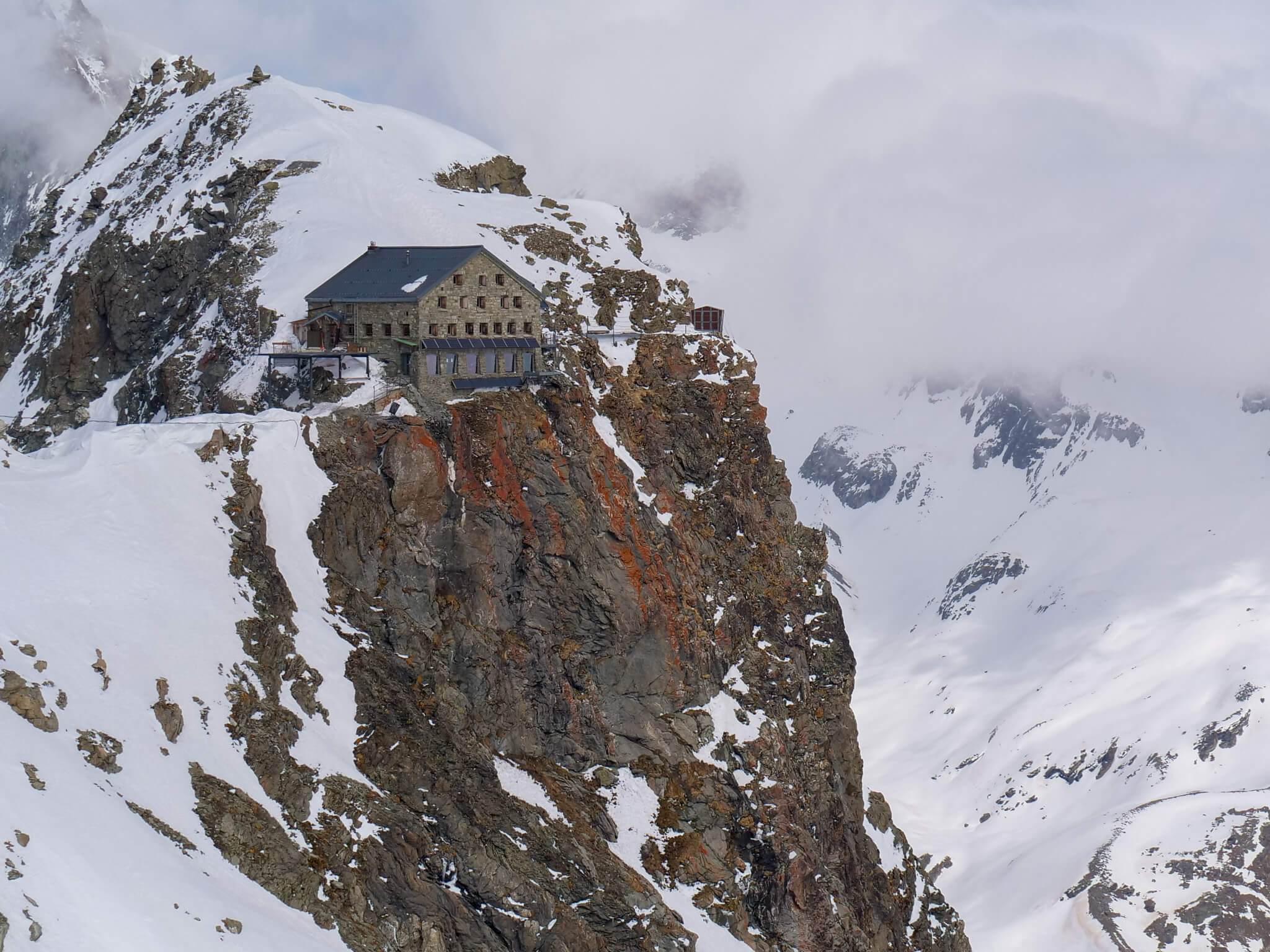
The hut is one of the most popular in Switzerland. It is perched on a rocky spur at 3,150 m altitude. This should have been our stopover, but when we passed through, the hut was closed due to several cases of Covid contamination.
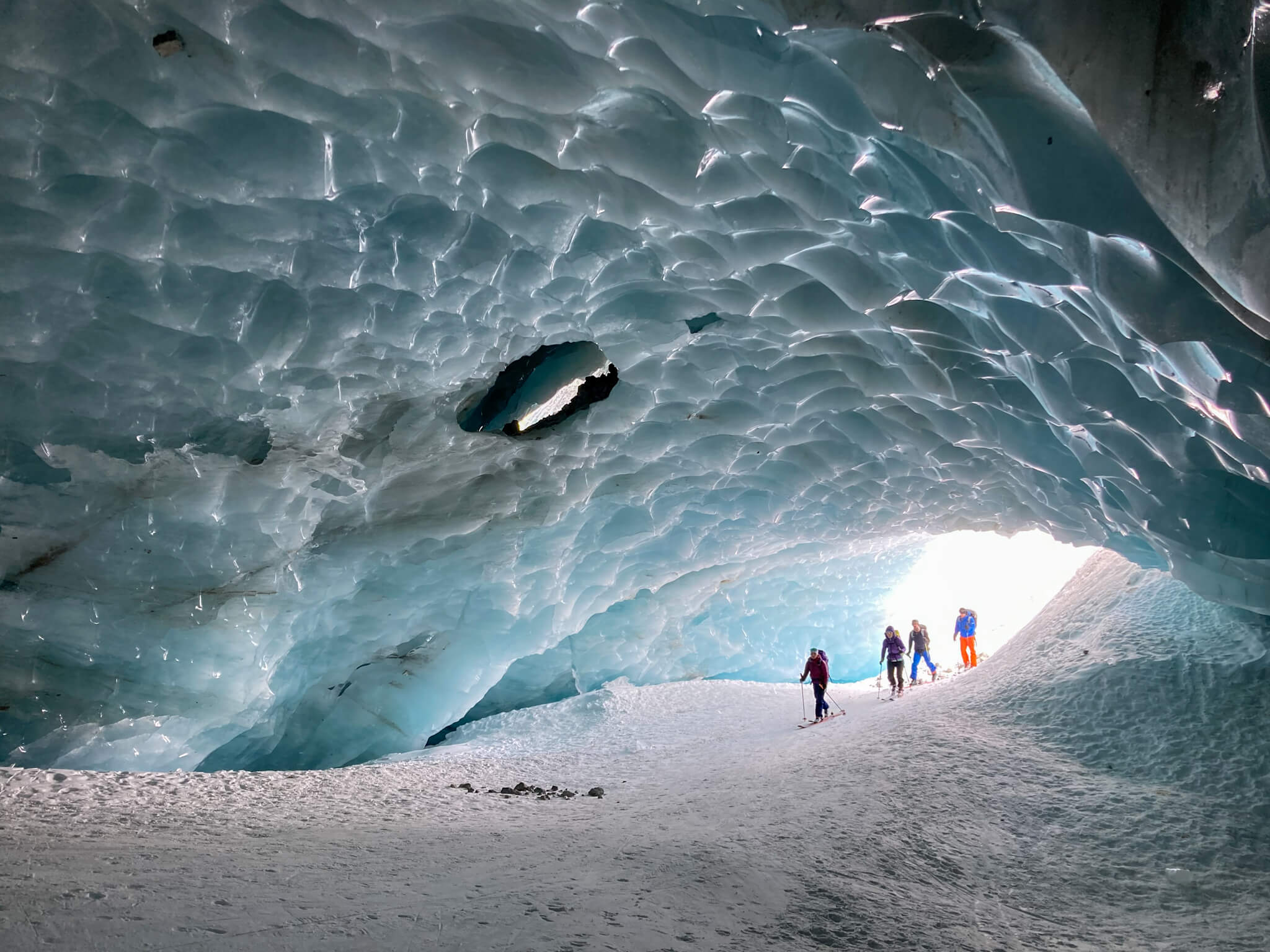
The ice grotto on the Arolla glacier. Carved out by wind and water, a gigantic block of ice has been transformed into a tunnel.
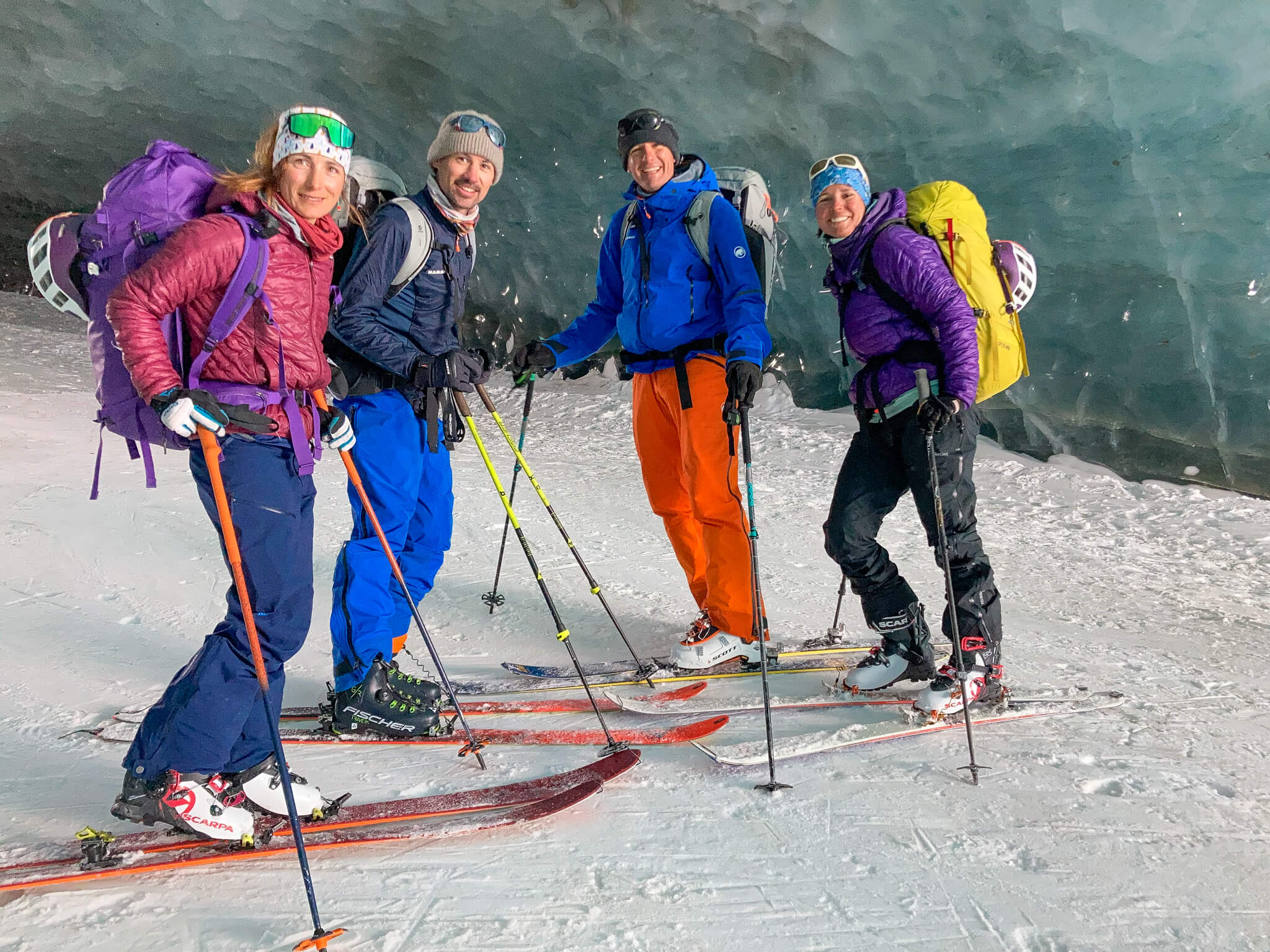
We discover the translucent ice on the walls of this ephemeral, ever-changing place. The cave has now collapsed.
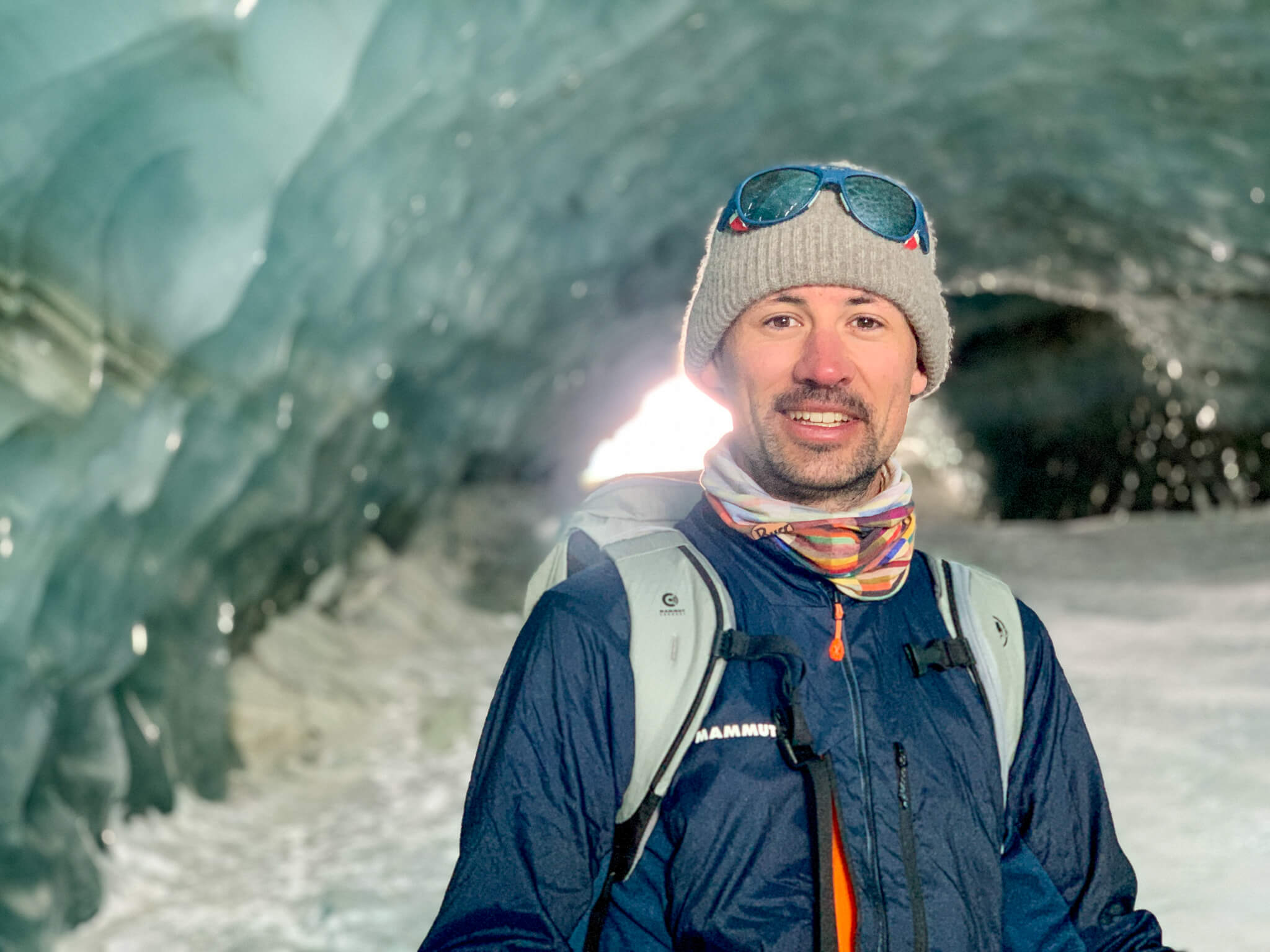
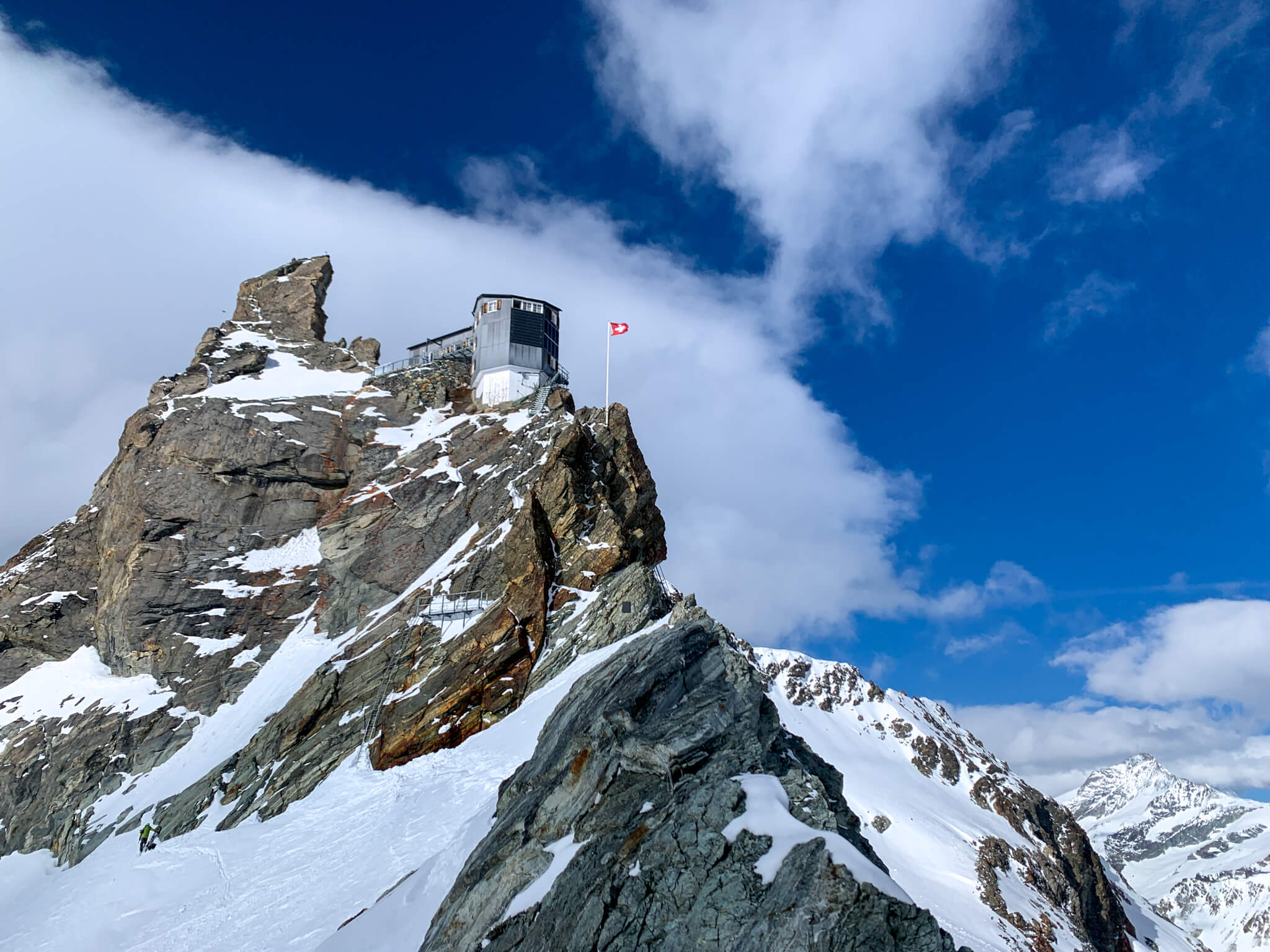
A veritable fortress defying the void, the Bertol hut is the last refuge of our traverse and one of the most spectacular in the Alps. It was created in 1988 thanks to a donation from Carl Russ Suchard, chocolate manufacturer and inventor of the Milka bar.
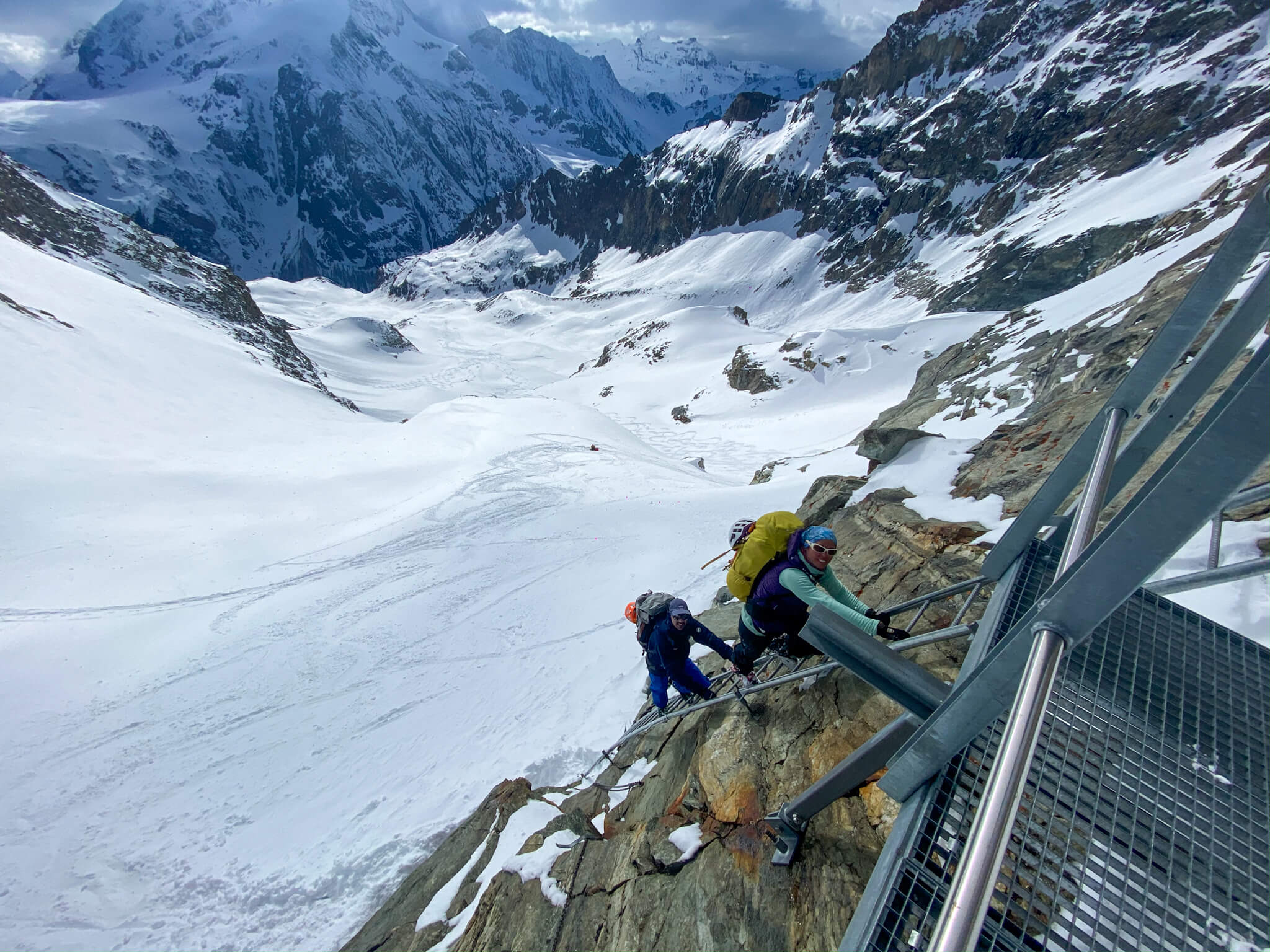
The climb to the hut is vertiginous. We’ll stay there for 24 hours to allow a storm to pass.
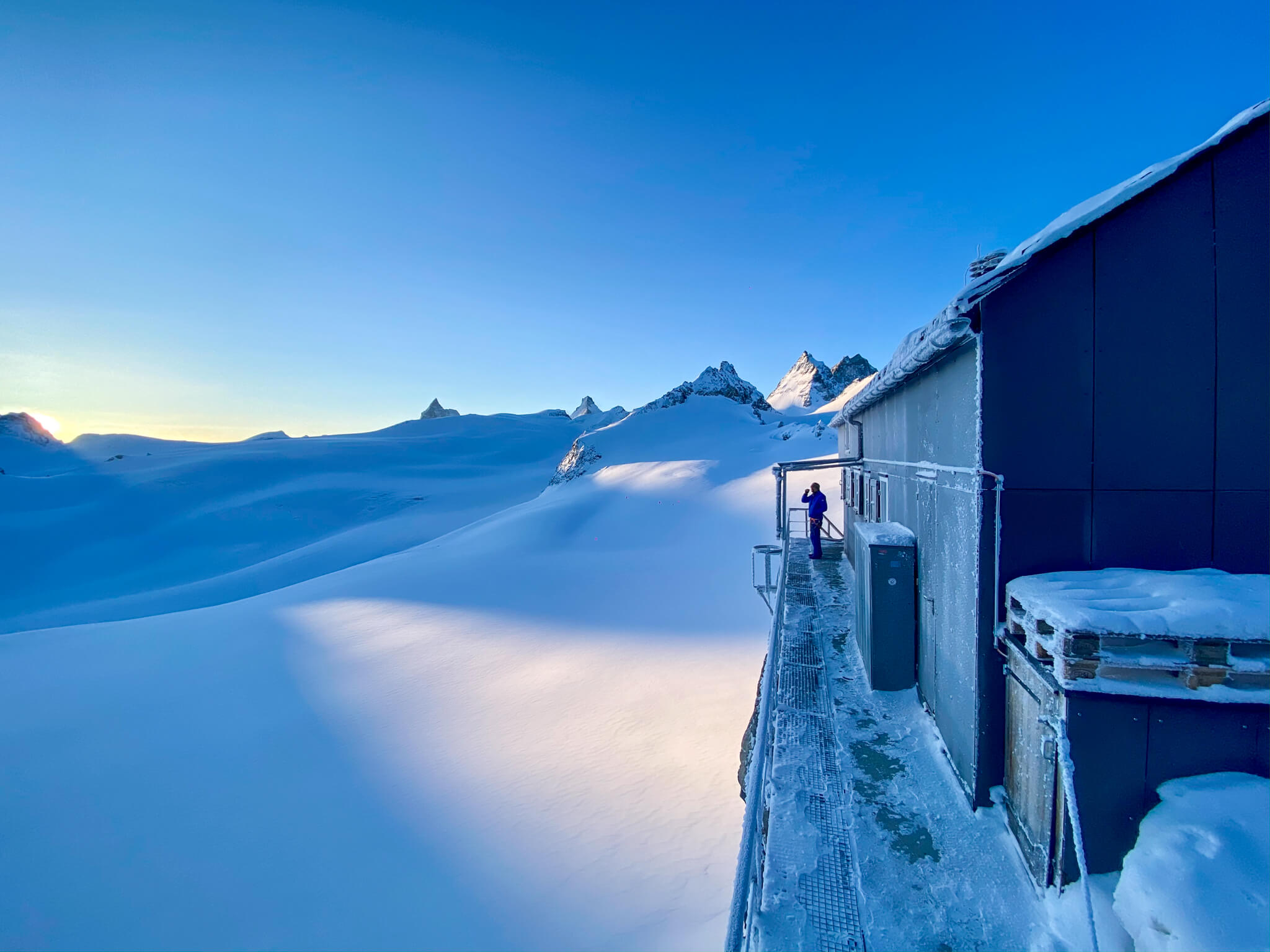
Brushing teeth from the Bertol hut in the early morning at 3,311 m altitude.
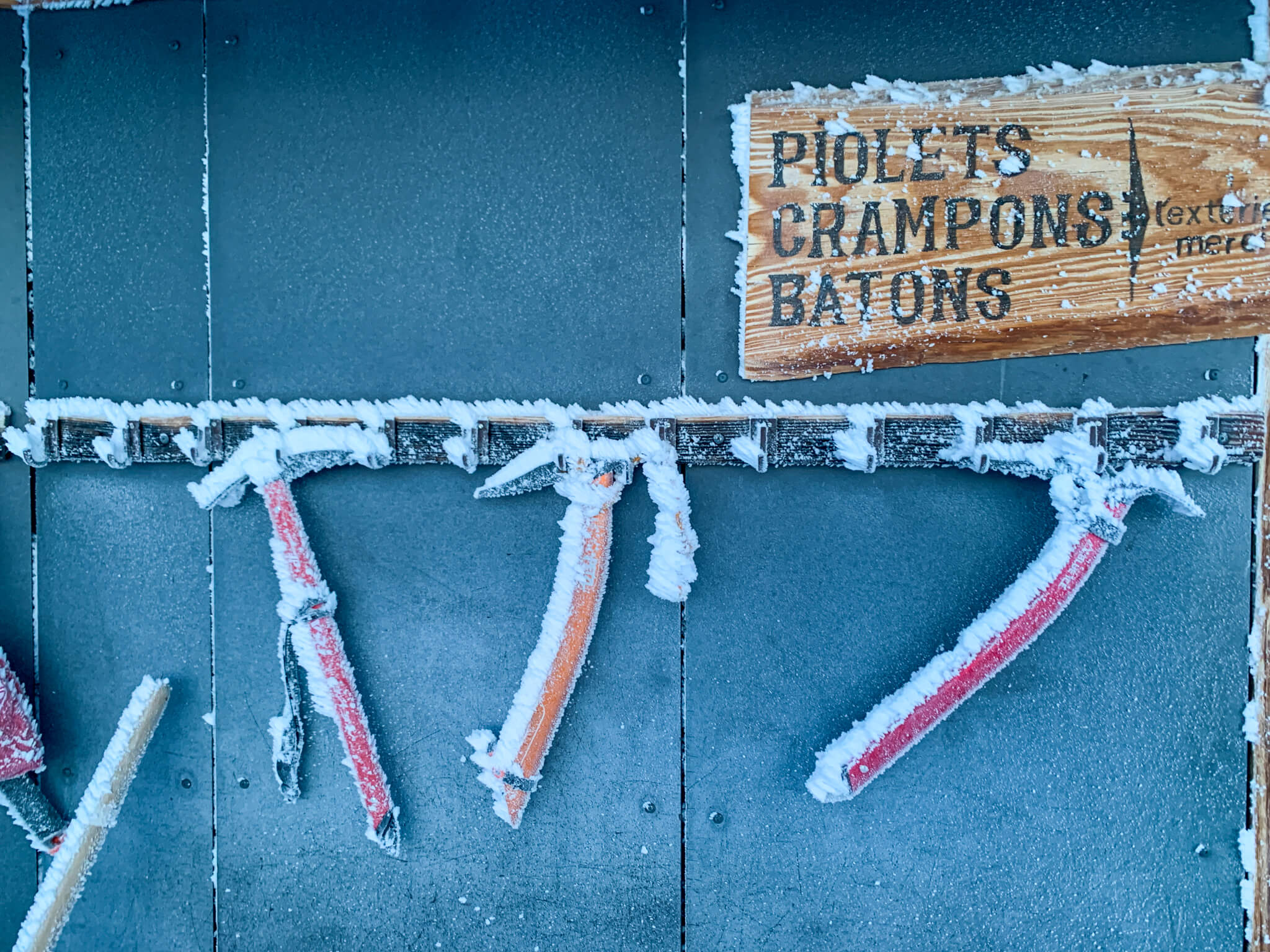
It was a freezing night. At this altitude, temperatures can reach -20°C.
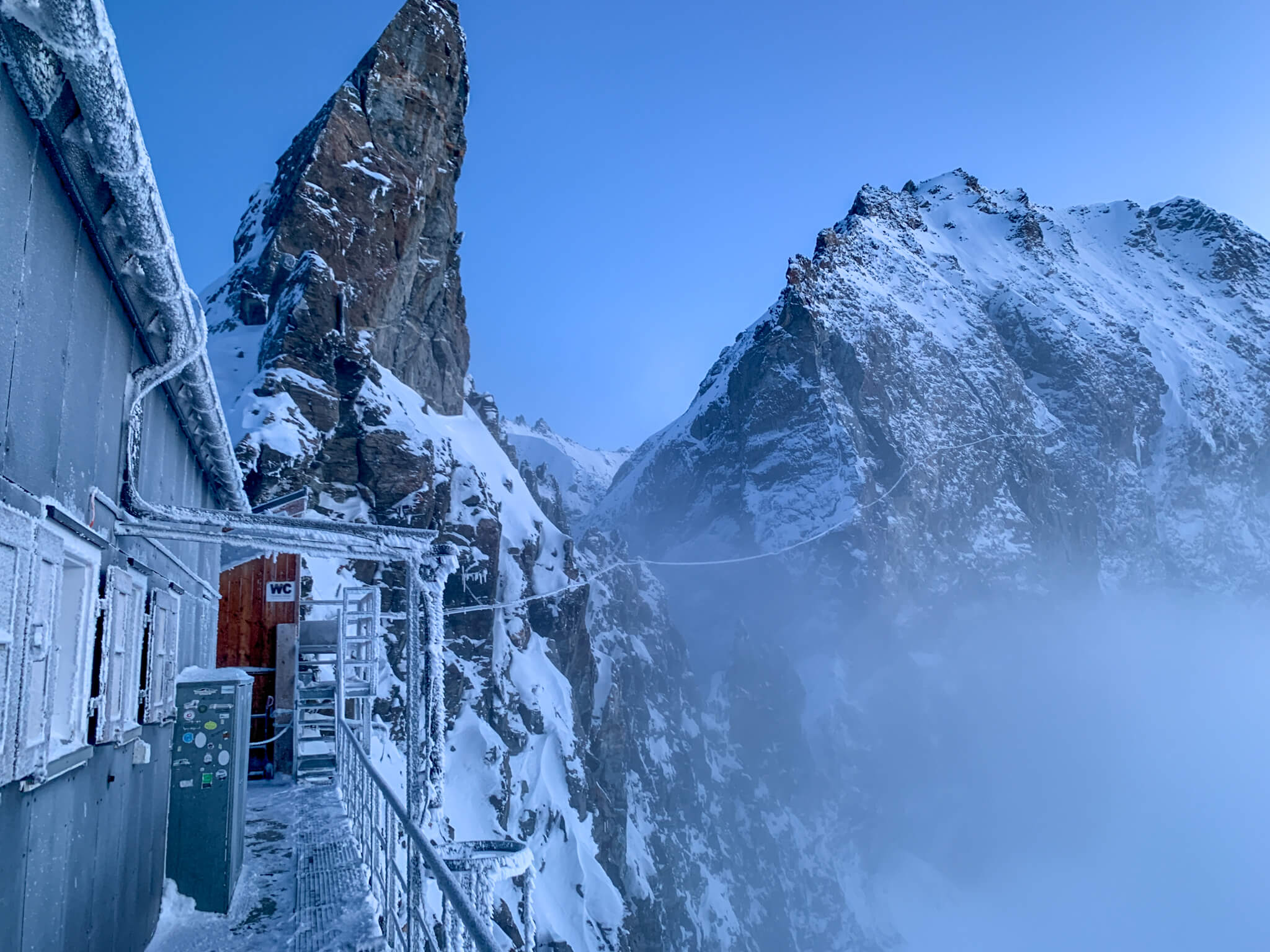
The footbridge leading to the refuge toilets. Keep your eyes open.
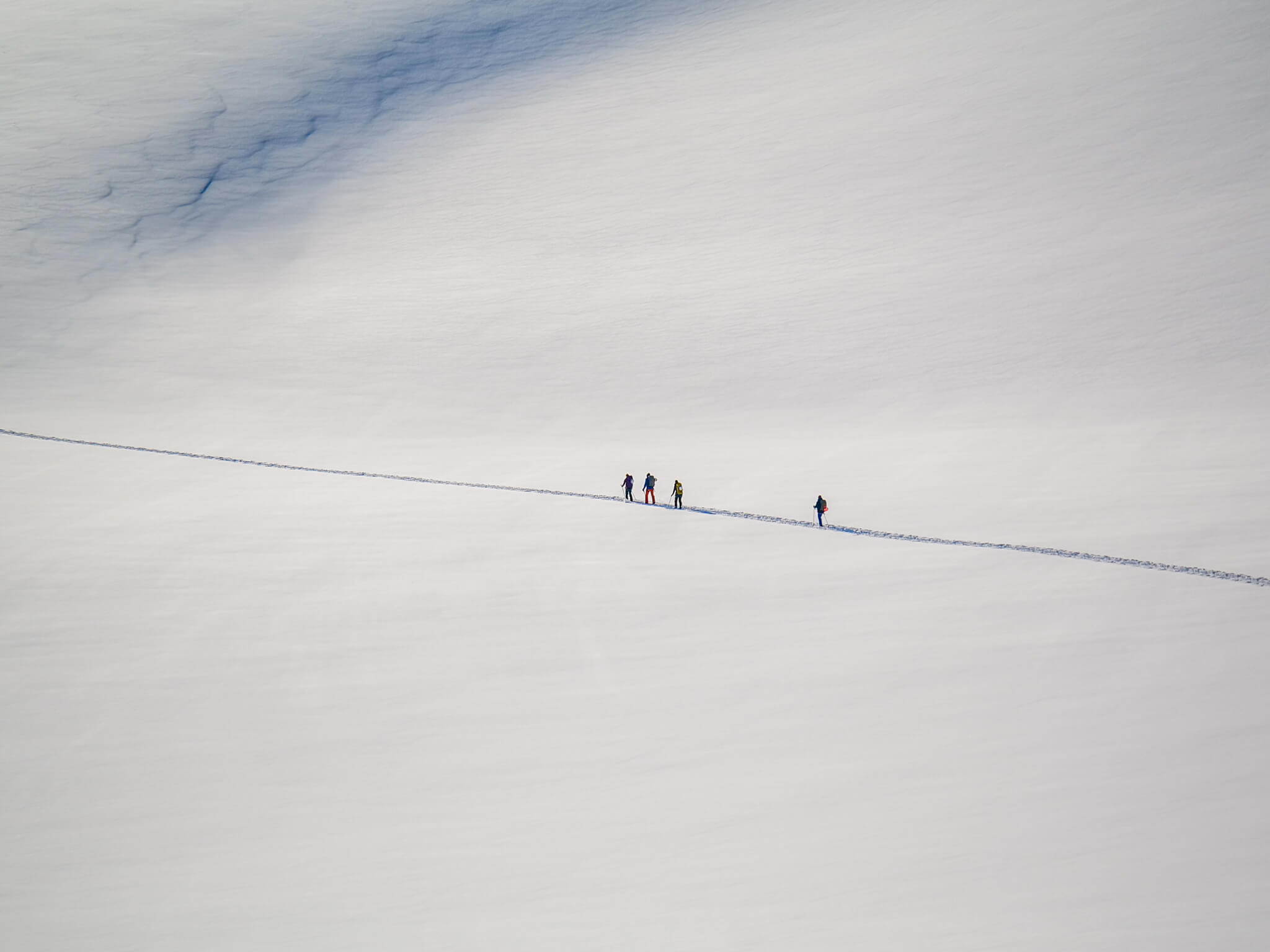
The mountains have been clad in an immaculate blanket of snow, after several days of non-stop snowfall.
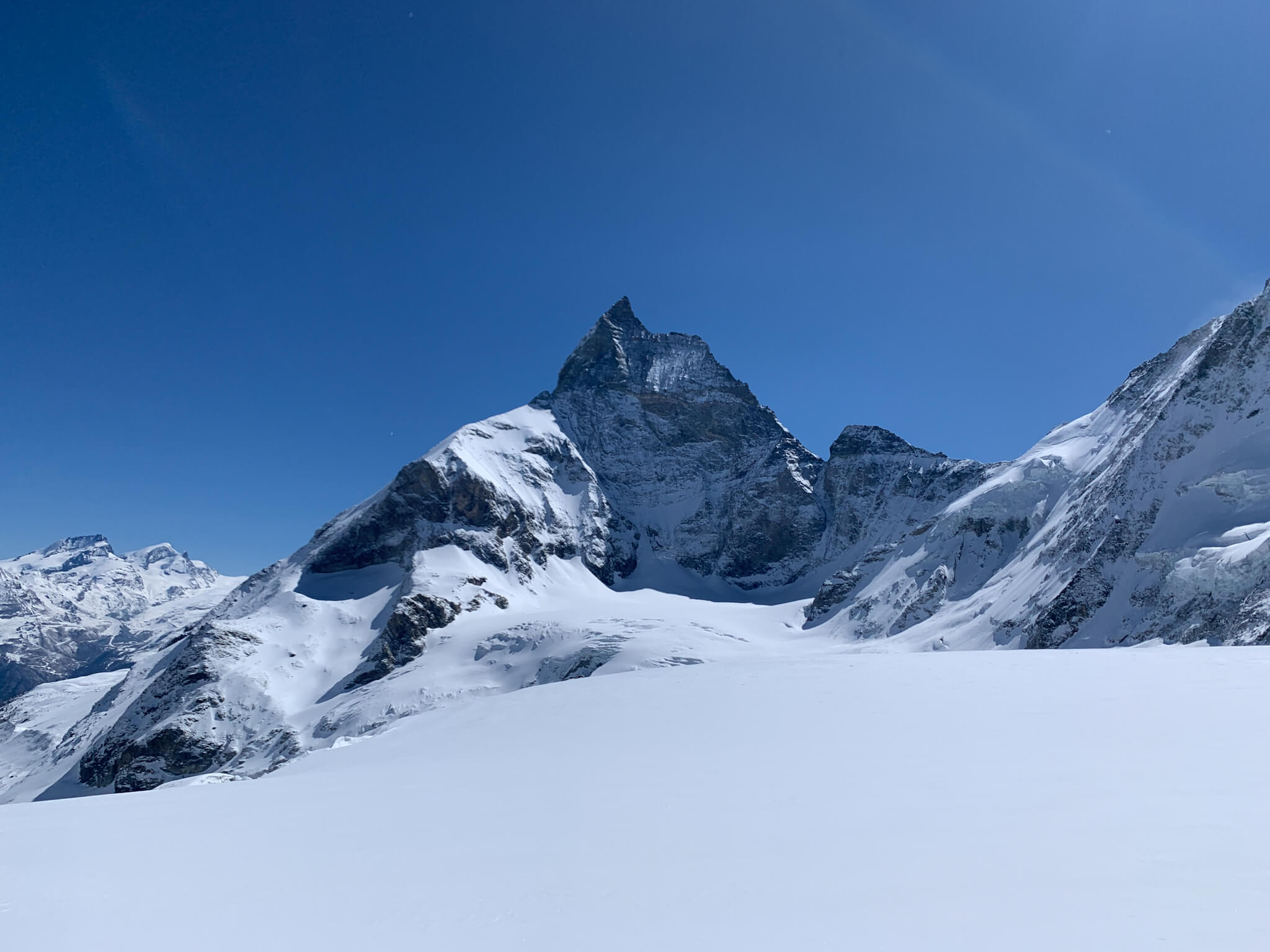
We pass the foot of the Matterhorn’s North Face before gliding down to Zermatt.
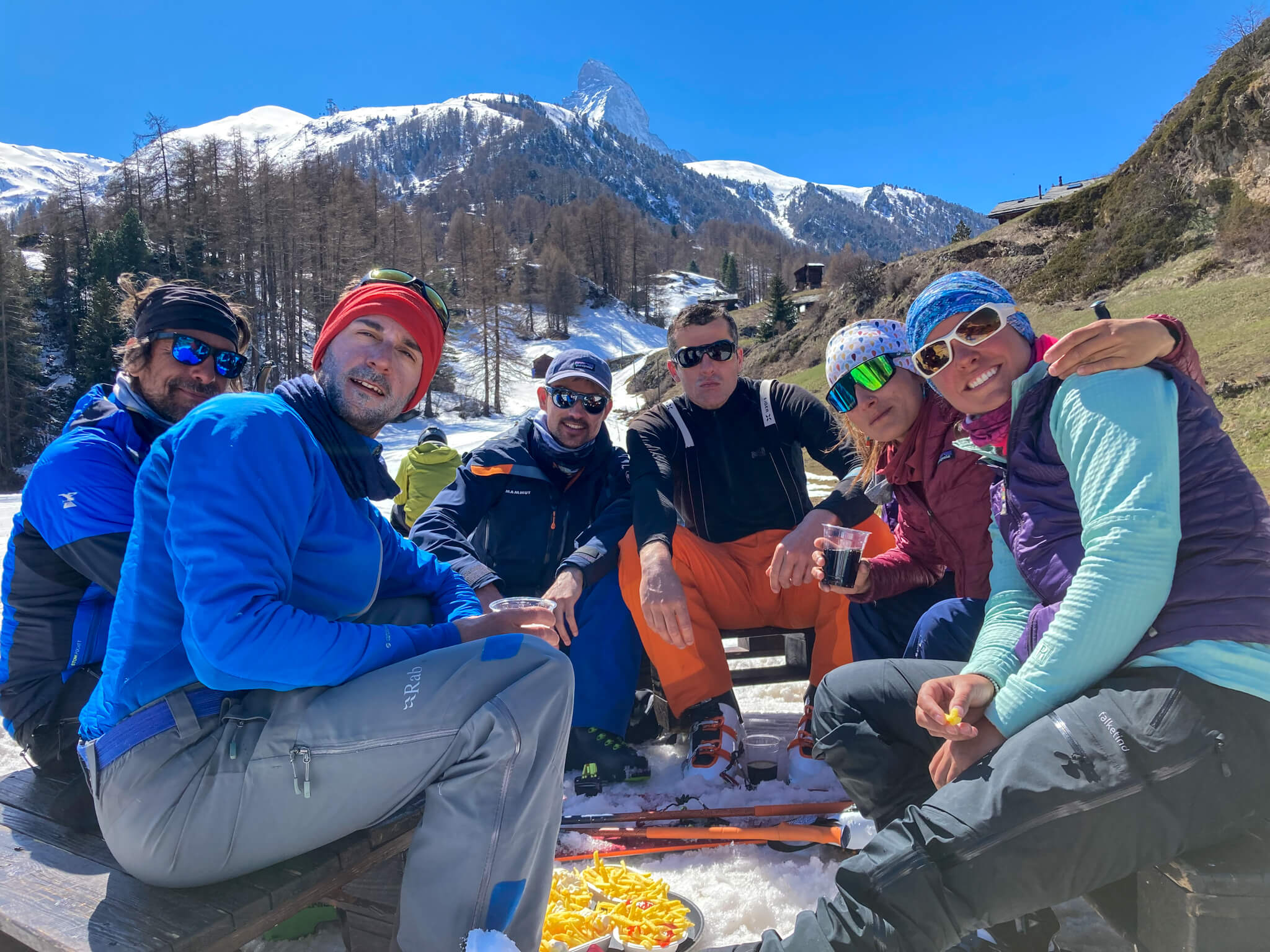
We celebrate our arrival in Zermatt and return to civilization, after 10 days spent all six of us at altitude.
Thanks to Mammut for avalanche equipment and mountain clothing, and Fischer Sports for touring skis and boots.